 1. Introduction
1. Introduction
2. A desert walk
3. Nahuatli steel
4. Pactum: M.O.D.L.
5. Mortuary: Blackened Images
6. Transmetal: Amanecer en el Mausuleo
7. Cenotaph: Riding Our Black Oceans
8. Shub Niggurath: The Kinglike Celebration
9. Sargatanas: The Enlightenment
10. Aztec rites of darkness
11. Xibalba: Ah Dzam Poop Ek
12. Funereal Moon: Beneath the Cursed Light…
13. Avzhia: The Key of Throne
14. Demolish: Remembering the Cabalisticae Laments
15. Argentum: Ad Interitum Funebrarum
16. The Chasm: Conjuration of the Spectral Empire
17. The resurrection of the necrocults
18. Necroccultus: Encircling the Mysterious Necrorevelation
19. Yaotl Mictlan: Guerreros de la Tierra de los Muertos
20. Infinitum Obscure: Sub Atris Caelis
21. Denial: Catacombs of the Grotesque
Written by Devamitra, ObscuraHessian, Pearson and Xavier with Eduardo (Shub Niggurath / Necroccultus), Demogorgon (Avzhia), Marco (Xibalba) and Joel (Mortuary)
Introduction
In Mexico the god appears; thy banner is unfolded in all directions, and no one weeps.

Goedel’s law tells us that no logical system can anticipate all of the demands of reality, because reality as an inarticulated mass of events and causes is naturally bigger in scope than any description of reality. The fallout from this is that every society loves to have a no man’s land, an anarchy zone and a lawless frontier. It’s hard to talk of Mexico as a singular entity when it is comprises so much more. It’s a former Spanish colony, containing the vestiges of two of the greatest empires to walk the earth — the Aztec and Maya, both of whom were warlike, enjoyed human sacrifice, and compiled more learning that any modern group would voluntarily undertake. In addition, it’s also part very learned place, part chaotic third-world disaster, and part anarchy zone. From this ferment comes some of the best metal to grace the earth. After Scandinavia and the US, Mexico produces the most quality underground music. And even more, the Mexican bands seem to “get it”: they can reconcile a nihilistic morality, technological warfare and even gutter-level fighting sensibilities with the arch, elegant and imposing formality and bravery of the past.
A desert walk
Muerte. That word, in Mexican art, embodies religious and historical streams of life so much more than the anglosphere’s clinically worldly emphasis on death as medical phenomenon. This muerte is a gate to antiquity, a divine storm, a holy mystery – contemplation of its secrets connects the Catholic superstition, still so powerful and affecting to common people, to the cruel and decadent rituals of the Toltecs and Olmecs, when no purpose higher could be envisioned than to bleed for the gods. Glimpses into Mexican tradition most often involve the morbid signature of supernatural belief in a strange form of unearthly life, represented by the skull worship of the Day of the Dead and the various devil masks and bizarre colourful monsters decorating the fiestas, as in embodiment of death metal aphorisms such as “the past is alive”.
 It would be fairly easy and obvious to point out social ills, crime rates and poverty as motivating factors for religiously oriented fatalistic thoughts, but for the psychologist and the occultist the pathology of the morbid mind is not only a reaction, it is also a cause itself, deeply ingrained in behavior and culture. To go into this sphere in depth would require another kind of a broader study and it is hardly of interest to most of our readers, so we shall mostly be occupied with the mythical, visionary image of Mexico, closest to us who are far away. It is the land of the eagle and the scorpion, of the peyote cactus and tropical steam, of the sea and the canyon. As we see everywhere in the world, the landscape becomes the structure of the mind, which gives life to stories and archetypes showing the apparent chaotic complexity of nature in symmetrical solutions. And musically, what can offer better representations of the occult-mathematical beauty of life than the hymnals of muerte: Death Metal and Black Metal?
It would be fairly easy and obvious to point out social ills, crime rates and poverty as motivating factors for religiously oriented fatalistic thoughts, but for the psychologist and the occultist the pathology of the morbid mind is not only a reaction, it is also a cause itself, deeply ingrained in behavior and culture. To go into this sphere in depth would require another kind of a broader study and it is hardly of interest to most of our readers, so we shall mostly be occupied with the mythical, visionary image of Mexico, closest to us who are far away. It is the land of the eagle and the scorpion, of the peyote cactus and tropical steam, of the sea and the canyon. As we see everywhere in the world, the landscape becomes the structure of the mind, which gives life to stories and archetypes showing the apparent chaotic complexity of nature in symmetrical solutions. And musically, what can offer better representations of the occult-mathematical beauty of life than the hymnals of muerte: Death Metal and Black Metal?
To this day, Mexico has not produced vapid mainstream metal sensations nor hard rock imitations to speak of, at least not ones that would have entered our awareness. It’s as if the inward drawn nacional spirit shuns the idea of establishing false identities and masks of life through exports, but instead entertains the Mexicans with whatever art or entertainment the local masses wish to be produced – but this is a realm mostly obscure to outsiders. Even in order to scratch the surface of Mexican rock and metal, one needs to stress the importance of such luminaries as Luzbel and Transmetal, names mostly unknown even in cult metal collector circles. As a more recent example, the astral and progressive death metal of The Chasm has certainly been gathering well deserved praise and attention in the underground, but as a phenomenon it’s still far from gracing the cover in Terrorizer or Decibel magazine.
Nahuatli steel
 As the youth of the world tripped in the pseudo-spiritual chemical bliss of the 60′s, the seeds were sown in Mexico as well with an interest towards Rock music merged with esoteric and mystical themes, but true to its violent century, the nation oppressed its bravest minds, declaring them “communist”. Thus was quenched the initial surge of Heavy Metal, as clubs were closed, magazines censored and subversive content in radios minimized. Everywhere else the initial 70′s where the pivotal time for the realization of all kinds of “satanic” and “occult” music manifestations, so in the case of Mexico it took at least a decade to recover from vandalism espoused by the government.
As the youth of the world tripped in the pseudo-spiritual chemical bliss of the 60′s, the seeds were sown in Mexico as well with an interest towards Rock music merged with esoteric and mystical themes, but true to its violent century, the nation oppressed its bravest minds, declaring them “communist”. Thus was quenched the initial surge of Heavy Metal, as clubs were closed, magazines censored and subversive content in radios minimized. Everywhere else the initial 70′s where the pivotal time for the realization of all kinds of “satanic” and “occult” music manifestations, so in the case of Mexico it took at least a decade to recover from vandalism espoused by the government.
As the wave of Americanization hit Mexican youth culture in the early 80′s, it was inevitable that some unique voices would rise against manipulation and show their own kind of “metal mass”, inflected with the Catholic superstitions and violent streets they saw all around them with innocent, idealistic eyes. Two names especially can not go unmentioned: the original thrashers Death Warrant from Ciudad Juarez and the more classical but frighteningly psychic Luzbel from Mexico City, one of the greatest metal institutions to rise from the sand of Mexico and a prophet of Doom Metal themes and aspirations.
Huizar, the maniac behind Luzbel, managed to also put forth with his comrades at Escuadron Metalico label a series of compilations which in the mid-80′s showed the sounds of the new metal generation inspired by, mainly, American thrash metal and European speed metal. These “Proyecto” vinyls featured Transmetal, Ramses, Six Beer and practically everyone else who dominated the end of the 80′s when finally Mexican metal was too strong to be quenched by sporadic police raids and random accusations of blasphemy and iniquity. These troubles were akin to an anvil upon which the hammer of the light bringer shaped and pounded the minds that were to break free of the shackles of social upbringing and even “humanness” itself.
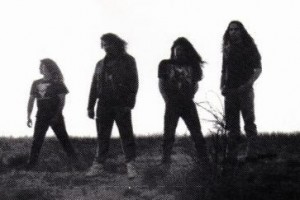 Eduardo: Well, to have a live appearance was not easy at all, because many people in Mexico (until this day) are a very difficult audience towards the Mexican bands. But we showed them that we were true about our ideals and that we gave 666% in every show! So we got the support of all the metalheads and they gave us in return a total storm of headbanging and full support. These were unforgettable moments to Shub Niggurath.
Eduardo: Well, to have a live appearance was not easy at all, because many people in Mexico (until this day) are a very difficult audience towards the Mexican bands. But we showed them that we were true about our ideals and that we gave 666% in every show! So we got the support of all the metalheads and they gave us in return a total storm of headbanging and full support. These were unforgettable moments to Shub Niggurath.
Joel: There was a small metal scene hungry to hear more extreme metal, so we always had great support from the beginning. I think there were more people supporting the scene than there is now supporting new metal bands, it’s a weird thing! Authority and “normal” people, as usual here, they didn’t understand our music. Sometimes the police were around looking to bother us, came up to the rehearsals and trying to get us, but never had luck, hahaha! And the people, those normal people, were the ones to send the police. I remember a show in Guadalajara or Leon in which the flyers had a circle in our logo and said: Watch out, Catholic, don’t assist! That was really funny.
Already before the decade was over, the most evil of the bands inspired by Thrash, namely Mortuary, Pactum, the inimitable Toxodeth and Transmetal (who tightened their sound album by album and still continue to do so after more than 20 years of career) had overtaken the gap between the international underground and the Mexican one. Suddenly the Judas Priest and Scorpions influence as the mainstream Mexican sound was replaced by a streetborn brutality and occult gore visions that would have made Slayer shudder. Studio and recording conditions were hardly ideal, but creating an easily digestible sound was hardly the intent of these iconoclasts, who repeated the slightly anterior efforts of the Brazilian scene in unleashing a torrent of noisy darkness easily mistaken for hardcore punk as the antithesis to forgetfulness and ignorance in adult human life.
Joel: Musically, our influences were basically Slayer, Venom, Possessed, Celtic Frost, and some classical masters. Lyrically important were the things inside my mind, my way to see this life, and obviously some great writers like Nietzsche, Poe and Lovecraft influenced us. Before Mortuary, each of us were playing in various bands songs of the bands that influenced us. When I was a child I studied some basic piano as well.
Eduardo: Also I had musical experience before Shub Niggurath: we created the Death Thrash Metal band called Tormentor. This was the origins for the unnameable abhorrence later known as Shub Niggurath.
Pactum – M.O.D.L.
 A mob of confusion, alike crawling insects, attacks the strings as early blasphemists Pactum struggle to make sense of violent, anti-religious ideas called forth by their satanic subconscious in Mexico City’s extreme response to Bathory and Sarcofago. While the anally raped vocalist rants meaninglessly on, the guitars manipulate suggestive, dischordant layers of picked notes and speedy runs that often sound chaotic but on a closer listen reveal an affinity with classical construction much like the early methods of Burzum and Ildjarn to call forth elegance from pieces of degeneration. Be it dissidence, incompetence or imagination that made Pactum to mangle the pieces of thrash they built upon nearly inrecognizable, the originality and harsh, spontaneous electric discharge that carries these songs onwards makes for a curious and surprising listen for those who are able to listen to the nearly unlistenable. In “M.O.D.L.” the band has discovered one of the valuable early lessons of black and death metal, that of desecrating the sanctity of rigid social structure by defying musical conventions and bringing the expression closer to the fractal noise of nature.
A mob of confusion, alike crawling insects, attacks the strings as early blasphemists Pactum struggle to make sense of violent, anti-religious ideas called forth by their satanic subconscious in Mexico City’s extreme response to Bathory and Sarcofago. While the anally raped vocalist rants meaninglessly on, the guitars manipulate suggestive, dischordant layers of picked notes and speedy runs that often sound chaotic but on a closer listen reveal an affinity with classical construction much like the early methods of Burzum and Ildjarn to call forth elegance from pieces of degeneration. Be it dissidence, incompetence or imagination that made Pactum to mangle the pieces of thrash they built upon nearly inrecognizable, the originality and harsh, spontaneous electric discharge that carries these songs onwards makes for a curious and surprising listen for those who are able to listen to the nearly unlistenable. In “M.O.D.L.” the band has discovered one of the valuable early lessons of black and death metal, that of desecrating the sanctity of rigid social structure by defying musical conventions and bringing the expression closer to the fractal noise of nature.
Mortuary – Blackened Images
 The elaborate and malign death metal of Mortuary is one of the most recognized funereal voices of early Mexican scene in cult circles and totally deservedly so, as the melodious and grinding old school sound hasn’t dated one bit but preserves the vital energy field of the times when death metal was not taken for granted, the quest for the ultimate density and sobriety. The rhythmic intensity brings to mind the debuts of Morbid Angel and Vader while the gloomy melody disposed as the interconnector of the more thrashing riffs is without question Central or South American in character (think: “INRI”). Joel Alanis’ voice escapes the trap that caused problems for many a thrasher, holding the rhythm of the syllables in position when reciting the blasphemies in English, and his powerful roar commands the fast, climactic and concise songs effortlessly to their logical conclusions. Even today Mortuary’s short but perfectly articulate album could serve as a protocol for building enjoyable but deep death metal, one that incites both head-banging and heart-scrutiny as the ultra-infectious “Reign of Dead” and “Asphyxiation” attack your brain with sensations from beyond and memories from the depths of the layers of mental programming.
The elaborate and malign death metal of Mortuary is one of the most recognized funereal voices of early Mexican scene in cult circles and totally deservedly so, as the melodious and grinding old school sound hasn’t dated one bit but preserves the vital energy field of the times when death metal was not taken for granted, the quest for the ultimate density and sobriety. The rhythmic intensity brings to mind the debuts of Morbid Angel and Vader while the gloomy melody disposed as the interconnector of the more thrashing riffs is without question Central or South American in character (think: “INRI”). Joel Alanis’ voice escapes the trap that caused problems for many a thrasher, holding the rhythm of the syllables in position when reciting the blasphemies in English, and his powerful roar commands the fast, climactic and concise songs effortlessly to their logical conclusions. Even today Mortuary’s short but perfectly articulate album could serve as a protocol for building enjoyable but deep death metal, one that incites both head-banging and heart-scrutiny as the ultra-infectious “Reign of Dead” and “Asphyxiation” attack your brain with sensations from beyond and memories from the depths of the layers of mental programming.
Transmetal – Amanecer en el Mausuleo
 As the inaugural saints of muerte spread their leathery wings over Michoacán and the 80′s were drawing to a close, Mexico’s silence was ruptured by these mangled, hellspawned shouts and nearly arbitrary riff structures envisioned by the scene’s godfathers Transmetal as the path leading to the aerie of the future. Simple and pitiless like a less experienced Sepultura or Slayer debut, this early collection sees Transmetal attempting to bludgeon their way through a barrage of speed metal in an endless call-and-response of rhythm riff and hoarse barking. Germans had invented most of these figures and refrains as early as 1984 but the untamed desert frontier of their homeland does bestow Transmetal with a rancor bringing it closer to the most subterranean and spontaenous garage punk bands that had the chance to practice their instruments on brief relapses from fighting social corruption. The sketchy but decisive melodies of “Temor a la Cruz” and “Fuerza Invisible” hardly represent an international or even local pinnacle of art, but they were enjoyed by a legion of punks and metalheads for their absolute breakup with the more mainstream appealing qualities of traditional heavy metal.
As the inaugural saints of muerte spread their leathery wings over Michoacán and the 80′s were drawing to a close, Mexico’s silence was ruptured by these mangled, hellspawned shouts and nearly arbitrary riff structures envisioned by the scene’s godfathers Transmetal as the path leading to the aerie of the future. Simple and pitiless like a less experienced Sepultura or Slayer debut, this early collection sees Transmetal attempting to bludgeon their way through a barrage of speed metal in an endless call-and-response of rhythm riff and hoarse barking. Germans had invented most of these figures and refrains as early as 1984 but the untamed desert frontier of their homeland does bestow Transmetal with a rancor bringing it closer to the most subterranean and spontaenous garage punk bands that had the chance to practice their instruments on brief relapses from fighting social corruption. The sketchy but decisive melodies of “Temor a la Cruz” and “Fuerza Invisible” hardly represent an international or even local pinnacle of art, but they were enjoyed by a legion of punks and metalheads for their absolute breakup with the more mainstream appealing qualities of traditional heavy metal.
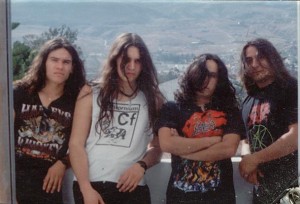 If there is a style of metal one thinks of in regards to Mexico, it must be Death Metal, in its brutal but most oblique forms, the sonic heir to Aztecs’ solar blood rites and Toltecs’ shadowy sorceries, an amalgamation of heretical thought inspired by Crowley and Lovecraft with a deep respect for the sacred and universal forces of nature which permeates the continuity of godforms in Catholic religious language in shades of traditional paganism which it overtook in surface but never in spirit. The first of these classics was undoubtedly Mortuary’s famous “Blackened Images” (also one of the earliest important Mexican releases sung in English) but no underground Death Metal maniac would forget the splendid, churning visions of Shub Niggurath (“Evilness and Darkness Prevails”, “The Kinglike Celebration”) or Sargatanas (“The Enlightenment”) either, not to mention the virile luminary Cenotaph (“The Gloomy Reflections of Our Hidden Sorrows”, “Riding Our Black Oceans”) whose lifeblood still runs in the veins of the most prized names of today’s underground (The Chasm, Denial and Hacavitz among others feature former Cenotaph members).
If there is a style of metal one thinks of in regards to Mexico, it must be Death Metal, in its brutal but most oblique forms, the sonic heir to Aztecs’ solar blood rites and Toltecs’ shadowy sorceries, an amalgamation of heretical thought inspired by Crowley and Lovecraft with a deep respect for the sacred and universal forces of nature which permeates the continuity of godforms in Catholic religious language in shades of traditional paganism which it overtook in surface but never in spirit. The first of these classics was undoubtedly Mortuary’s famous “Blackened Images” (also one of the earliest important Mexican releases sung in English) but no underground Death Metal maniac would forget the splendid, churning visions of Shub Niggurath (“Evilness and Darkness Prevails”, “The Kinglike Celebration”) or Sargatanas (“The Enlightenment”) either, not to mention the virile luminary Cenotaph (“The Gloomy Reflections of Our Hidden Sorrows”, “Riding Our Black Oceans”) whose lifeblood still runs in the veins of the most prized names of today’s underground (The Chasm, Denial and Hacavitz among others feature former Cenotaph members).
Demogorgon: Our ancient strain of blood has always been important to us, as on it are real human sacrifices and that is something we deeply connect with. We are proud of it and it deserves all of our respect. But anyway, we are mostly influenced by European Black Metal.
Joel: Definitely the legacy of our past has been influential in what we do, also the current situation in which the country has plunged. All the ups and downs of the past of our culture influence us directly or indirectly. The difference is the window from which we look at it, it’s definitely not the same as for the rest.
 Eduardo: Mostly these bands’ message is about Death, destruction and occultism. If I’m not wrong, only Xibalba took our cultural roots into his concept – they even wrote “Unique Mayan Black” on their debut album. Cenotaph, Mortuary, Shub Niggurath, Tormentor, Deus Mortis, Deadly Dark, Necrophiliac and Pentagram among others were influenced by the Florida and Scandinavian scenes when they built Death Metal during the late 80′s and the early 90′s. My influences have always been bands like Morbid Angel, Deicide, Bathory (old), Sodom (old), Nihilist, Therion (demos), Thergothon, Winter, Necroschizma, Bolt Thrower, Slayer (old) and H.P. Lovecraft’s masterpieces. In Shub Niggurath, Arturo (who handled vocal invocations) was always in charge of the lyrical concept. Regarding “Evilness and Darkness Prevails” I only did the guitar solos, after that I had to leave the band. I have nothing to do with “The Kinglike Celebration” – for me this is not the real Shub Niggurath. For me, this was just some kind of project, without Arturo there, I am not sure about the result.
Eduardo: Mostly these bands’ message is about Death, destruction and occultism. If I’m not wrong, only Xibalba took our cultural roots into his concept – they even wrote “Unique Mayan Black” on their debut album. Cenotaph, Mortuary, Shub Niggurath, Tormentor, Deus Mortis, Deadly Dark, Necrophiliac and Pentagram among others were influenced by the Florida and Scandinavian scenes when they built Death Metal during the late 80′s and the early 90′s. My influences have always been bands like Morbid Angel, Deicide, Bathory (old), Sodom (old), Nihilist, Therion (demos), Thergothon, Winter, Necroschizma, Bolt Thrower, Slayer (old) and H.P. Lovecraft’s masterpieces. In Shub Niggurath, Arturo (who handled vocal invocations) was always in charge of the lyrical concept. Regarding “Evilness and Darkness Prevails” I only did the guitar solos, after that I had to leave the band. I have nothing to do with “The Kinglike Celebration” – for me this is not the real Shub Niggurath. For me, this was just some kind of project, without Arturo there, I am not sure about the result.
Cenotaph – Riding Our Black Oceans
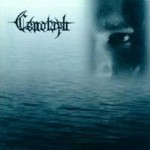 Coming off the back of an excellent debut in the form of ‘The Gloomy Reflections Of Our Hidden Sorrows’ and losing a prominent member in the form of Daniel Corchado, Mexican horde Cenotaph radically altered their sound aesthetically and showed a refinement of production and to a smaller extent, musical technique. Whereas the first full-length resembled a prototypical version of Nile, with an exotic though nonetheless esoteric and original take on New York death metal (think Incantation, Morpheus Descends), ‘Riding Our Black Oceans’ owes its musical framework, when speaking of instrumental technique, to European metal, most notably the first two albums of At The Gates, with a much more classicist approach to melody. With the outgoing of previous throatman Corchado a new vocal makes itself at home, not far from the tortured howls of Anders Friden. The same sense of aggression is also present in this work, but is less of a catharsis than the aforementioned Swedish band or the German act Atrocity, and has a motive towards evoking a nostalgic depth, rather than a psychological-emotional one. The percussion is chaotic and structurally brings to mind a more rigid and maze-like ‘Beneath The Remains’ by Sepultura, with more adventurous battery that evokes their ‘Morbid Visions’ record. Acoustic guitars embellish and interlock with these intricate arrangements, and are an obvious nod to Mediterranean and Southern European music. This stylistic admixture works brilliantly, rather than being a work that is merely imitative of an established style, it works the more obvious traits for its own ends, borrowing rather than copying. Cenotaph make a very distinct and profound work here, one of the finest releases to come out of Latin America.
Coming off the back of an excellent debut in the form of ‘The Gloomy Reflections Of Our Hidden Sorrows’ and losing a prominent member in the form of Daniel Corchado, Mexican horde Cenotaph radically altered their sound aesthetically and showed a refinement of production and to a smaller extent, musical technique. Whereas the first full-length resembled a prototypical version of Nile, with an exotic though nonetheless esoteric and original take on New York death metal (think Incantation, Morpheus Descends), ‘Riding Our Black Oceans’ owes its musical framework, when speaking of instrumental technique, to European metal, most notably the first two albums of At The Gates, with a much more classicist approach to melody. With the outgoing of previous throatman Corchado a new vocal makes itself at home, not far from the tortured howls of Anders Friden. The same sense of aggression is also present in this work, but is less of a catharsis than the aforementioned Swedish band or the German act Atrocity, and has a motive towards evoking a nostalgic depth, rather than a psychological-emotional one. The percussion is chaotic and structurally brings to mind a more rigid and maze-like ‘Beneath The Remains’ by Sepultura, with more adventurous battery that evokes their ‘Morbid Visions’ record. Acoustic guitars embellish and interlock with these intricate arrangements, and are an obvious nod to Mediterranean and Southern European music. This stylistic admixture works brilliantly, rather than being a work that is merely imitative of an established style, it works the more obvious traits for its own ends, borrowing rather than copying. Cenotaph make a very distinct and profound work here, one of the finest releases to come out of Latin America.
Shub-Niggurath – The Kinglike Celebration (Final Aeon On Earth)
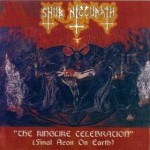 From the extra-dimensional plane of unspeakable horrors that’s revealed in our nightmares by black, arachnoid creatures, prying open our sub-conscious to witness terrible visions, comes this brutal classic of Lovecraftian Death Metal. As a later album in the old-school tradition, ‘The Kinglike Celebration’ has the strength of dynamic and coherent composition under the unmistakeably nefarious atmospheres that could only come from the first generation to be instructed by the likes of Possessed and Sepultura. Unlike more recent acts such as Portal that also delve into the Non-Euclidean realm of Howard Phillip, this work remains an highly geometric one, as if to frame the malevolent world of the Ancient Ones within the scope of human cognition, enabling the sensations of fear and awe and involuntary submission to the higher, evil will. The symmetrical structure of these songs oversee a central melodic theme being deconstructed with the horror of trembling and ominously churning, Deicidean riff-work that builds to a majestic revelation of cosmic power, usually embellished by eerie synths. From this expanse, the band reintroduces the central riff, re-contextualising it through powerful lead overlays and purposeful percussive and rhythmic enunciation, with the crescendo-inducing prowess of a Classical symphony. Shub-Niggurath advance the pulsating Slayerisms of Deicide’s first album to encompass thoughtful formulae of occult melodicism and awaken the unspeakable entities of the grand, cosmic hierachy.
From the extra-dimensional plane of unspeakable horrors that’s revealed in our nightmares by black, arachnoid creatures, prying open our sub-conscious to witness terrible visions, comes this brutal classic of Lovecraftian Death Metal. As a later album in the old-school tradition, ‘The Kinglike Celebration’ has the strength of dynamic and coherent composition under the unmistakeably nefarious atmospheres that could only come from the first generation to be instructed by the likes of Possessed and Sepultura. Unlike more recent acts such as Portal that also delve into the Non-Euclidean realm of Howard Phillip, this work remains an highly geometric one, as if to frame the malevolent world of the Ancient Ones within the scope of human cognition, enabling the sensations of fear and awe and involuntary submission to the higher, evil will. The symmetrical structure of these songs oversee a central melodic theme being deconstructed with the horror of trembling and ominously churning, Deicidean riff-work that builds to a majestic revelation of cosmic power, usually embellished by eerie synths. From this expanse, the band reintroduces the central riff, re-contextualising it through powerful lead overlays and purposeful percussive and rhythmic enunciation, with the crescendo-inducing prowess of a Classical symphony. Shub-Niggurath advance the pulsating Slayerisms of Deicide’s first album to encompass thoughtful formulae of occult melodicism and awaken the unspeakable entities of the grand, cosmic hierachy.
Sargatanas – The Enlightenment
 These blasphemers from Guadalajara were around as early as 1986 according to their biography. Only denizens of the infernal layers know what they must have sounded like back then, but their full length revelation is also nothing less than ancient and horrific, of deeply atmospheric and disturbed vision of extended, simple and dragging death metal torment. Shunning the eloquent melodies of Cenotaph and likewise the rhythmic energy of Mortuary, Sargatanas withdraws into ascetic and morbidly elongated tremolos pillared by blasphemous growls mostly maintaining the emotionless, yet commanding tone of satanic artifice, as a stone statue summoned to unholy life and crushing Christians with no haste or passionate compulsion – determinate, almost peaceful. The meditative quality is carried to the extreme in mid-paced or even slower songs such as “Fear and Suffering” or “The Proclamation” (featuring drum patterns motivated rather by ritual ambient than Dave Lombardo) making it even somewhat plodding. The band barely animates for a gloomy rendition of Possessed’s “Satan Curse” in a version that sounds like bubbling lava or tremors preceding an earthquake and one of the most delightful tracks on offer, the chaotic “Satanist” whose main riff recalls Rimsky-Korsakov’s “Flight of the Bumblebee” and as many other tracks on here, is seemingly randomly interrupted for a mock satanistic prayer. In any case, this inward bound attraction and solitude of vision will open only to deepest underground death metal cultists and fans of subtle terror based on psychological expectation and illogical mood cues, examples of which are found plenty in Mexican horror movies and early black metal in the vein of Samael and Barathrum, which undoubtedly heavily weigh on Sargatanas’ study list regardless of this band’s origins being placed even further back in the dimension of time.
These blasphemers from Guadalajara were around as early as 1986 according to their biography. Only denizens of the infernal layers know what they must have sounded like back then, but their full length revelation is also nothing less than ancient and horrific, of deeply atmospheric and disturbed vision of extended, simple and dragging death metal torment. Shunning the eloquent melodies of Cenotaph and likewise the rhythmic energy of Mortuary, Sargatanas withdraws into ascetic and morbidly elongated tremolos pillared by blasphemous growls mostly maintaining the emotionless, yet commanding tone of satanic artifice, as a stone statue summoned to unholy life and crushing Christians with no haste or passionate compulsion – determinate, almost peaceful. The meditative quality is carried to the extreme in mid-paced or even slower songs such as “Fear and Suffering” or “The Proclamation” (featuring drum patterns motivated rather by ritual ambient than Dave Lombardo) making it even somewhat plodding. The band barely animates for a gloomy rendition of Possessed’s “Satan Curse” in a version that sounds like bubbling lava or tremors preceding an earthquake and one of the most delightful tracks on offer, the chaotic “Satanist” whose main riff recalls Rimsky-Korsakov’s “Flight of the Bumblebee” and as many other tracks on here, is seemingly randomly interrupted for a mock satanistic prayer. In any case, this inward bound attraction and solitude of vision will open only to deepest underground death metal cultists and fans of subtle terror based on psychological expectation and illogical mood cues, examples of which are found plenty in Mexican horror movies and early black metal in the vein of Samael and Barathrum, which undoubtedly heavily weigh on Sargatanas’ study list regardless of this band’s origins being placed even further back in the dimension of time.
Aztec rites of darkness
Without prior knowledge it would be easy to assume that the Black Metal biosphere of Mexico would have been overtaken by bulletbelted battalions fueled by alcohol and sexual lust, but instead some of the most purely mystical and meditative classics of the 90′s underground arose from under the wings of Guttural Records, the all time prime supporter of Mexican occult metal who still keeps cranking out occasional re-releases of material whose quality is, occasionally, simply beyond our dreams. To name some, if you have not heard the most moving moments of Xibalba, Avzhia, Funereal Moon and Shub Niggurath, you don’t know how astral and insane Black Metal can simultaneously be while resorting neither to “progressive” nor “raw” clichés, instead being alive with the fervent force of Mexican demons that feast on the souls of succumbed sorcerers, the experience and experiment being total.
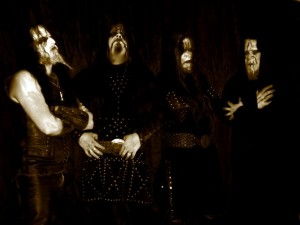 Marco: We have been listening to Metal music for a long, long time. We began by listening to a lot of ’70s bands (Purple, Priest, etc), we experienced the radical change and the explosion of the new bands from the ’80s (Venom, Bathory, etc.) and we just grew with the evolution of this music through the end of the ’80s and the beginning of the ’90s. I think all of this music has influenced us a lot. Books that have inspired us throughout all of this has been ancient literature from the pre-Hispanic cultures of our homeland – with special focus on the Mayan topics mainly, though we also like H.P. Lovecraft’s books. In those days, there were not many bands like us around. I remember that on the few gigs we had, some people were just staring at us, and some other were just enjoying the sound. It was really small and we just seem to get more attention from other countries than ours. Sometimes, regular people were inventing silly stories about bad things happening to them simply because we were about to play on that day. I don’t think the media was focused on this kind of extreme music back in those days, as it is now.
Marco: We have been listening to Metal music for a long, long time. We began by listening to a lot of ’70s bands (Purple, Priest, etc), we experienced the radical change and the explosion of the new bands from the ’80s (Venom, Bathory, etc.) and we just grew with the evolution of this music through the end of the ’80s and the beginning of the ’90s. I think all of this music has influenced us a lot. Books that have inspired us throughout all of this has been ancient literature from the pre-Hispanic cultures of our homeland – with special focus on the Mayan topics mainly, though we also like H.P. Lovecraft’s books. In those days, there were not many bands like us around. I remember that on the few gigs we had, some people were just staring at us, and some other were just enjoying the sound. It was really small and we just seem to get more attention from other countries than ours. Sometimes, regular people were inventing silly stories about bad things happening to them simply because we were about to play on that day. I don’t think the media was focused on this kind of extreme music back in those days, as it is now.
Demogorgon: Avzhia was formed with influence from Death, Thrash etc. Metal, absorbing and swallowing the blackest of these styles of Metal to form a dark and melancholic sound. Musically we were influenced by the old school of Black Metal, bands such as Bathory, Celtic Frost, Hellhammer, etc. and ideologically for example Emperor, Dissection, Satyricon, Black Crucifixion, Grand Belial’s Key, The Black, Tormentor, etc. We were never schooled musicians, we started doing it simply like we felt at the time in the earlier 90′s and we’re still doing music the same way. Avzhia was the only Black Metal band playing in the midst of a lot of Death Metal bands, we remember brutal mosh pits and hostility… so when Avzhia took the stage the audience seemed to be taken by a great fucking depression! In the early 90′s it was a big challenge to keep moving forward into the majestic world of Black Metal.
Xibalba – Ah Dzam Poop Ek
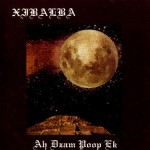 Like Cenotaph, but in the context of a Nordic black metal band, Xibalba take obvious cues from mid-period Darkthrone and Burzum’s ‘Det Som En Gang Var’, and use various aesthetic tricks to distinguish the artistic and ethnic context herein, whilst also succeeding in not letting grandeur overwhelm the beauty of their work. Flowing, harmonic riffs, much like an upbeat version of ‘Panzerfaust’ work their way through catchy, waltzing rhythms that would fit nicely into balladic pieces, sounding just as apt as an interpretation of ethnic, triplet based patterns, transferred onto the modern drumkit. Samples to introduce particular songs use ancient Mexican folk music to accentuate the ‘Mayan’ character of this record, this is done sparingly and is non-excessive, charming and ensnaring. This album is strictly traditionalist in its execution, but successfully incorporates unique, exotic elements into its framework, retains its dignity without compromising it’s honesty. This was released in 1994 and was a time where many metal acts were on the verge of signing artistic death warrants by trying too hard to be different. Xibalba continued the legacy of black metal’s orthodoxy and breathed new life into it.
Like Cenotaph, but in the context of a Nordic black metal band, Xibalba take obvious cues from mid-period Darkthrone and Burzum’s ‘Det Som En Gang Var’, and use various aesthetic tricks to distinguish the artistic and ethnic context herein, whilst also succeeding in not letting grandeur overwhelm the beauty of their work. Flowing, harmonic riffs, much like an upbeat version of ‘Panzerfaust’ work their way through catchy, waltzing rhythms that would fit nicely into balladic pieces, sounding just as apt as an interpretation of ethnic, triplet based patterns, transferred onto the modern drumkit. Samples to introduce particular songs use ancient Mexican folk music to accentuate the ‘Mayan’ character of this record, this is done sparingly and is non-excessive, charming and ensnaring. This album is strictly traditionalist in its execution, but successfully incorporates unique, exotic elements into its framework, retains its dignity without compromising it’s honesty. This was released in 1994 and was a time where many metal acts were on the verge of signing artistic death warrants by trying too hard to be different. Xibalba continued the legacy of black metal’s orthodoxy and breathed new life into it.
Marco: I think “Ah Dzam Poop Ek” is a great album, we express the essence and the atmosphere of our past in every song. Maybe it could have had a better production, but in the end that is the sound that captures the environment we are related to. And it’s good to stay away from a trite, standard and expected programmed sound. We hope to release our new album soon.
Funereal Moon – Beneath the Cursed Light of a Spectral Moon
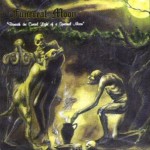 Easily one of the most obscure and horrifying symphonies ever composed on the Mexican soil, the drug-addled, hypnotic and twisted black ambient scenarios of Funereal Moon despite the Guttural Records connection bear little resemblance to the warm crusted ground of Xibalba or the quasi-Nordic beauty of Avzhia – or any other formal black metal for that matter. If you have heard some of the unsane abstractions concocted by the French black legionnaires or Texan congregation of Equimanthorn on their mostly private tape mayhem, you might have an inkling of what to expect. Subsonar synths throb, cheap reverbs multiply growling voices to comical intensities, layers merge into a ritual cacoon of violent concentration in a macabre crescendo of not-so-subtly erotic (especially in the hideous “Vrykolkas (White Irish Eyes)” backed by whiplashes and female moans) palpitations begging for release through the dagger of the proponent. When synthetic guitars and mechanically stumbling drumscapes kick in to approximate occult metal architectures, the effect is close to what Black Funeral evoked years later in the industrial black metal revivals of “Az-i-Dahak” and “Ordog” – here achieved without any excess stylistic measures, simply thrown in your face in the name of blasphemy and contempt. Cheesy and immature to the extreme, but at the same time mercilessly compelling like an exploitation movie, these desolate voices of sorcery seem somehow one of the closest to the alienation and horror of the Mexican “Nocturnos dominion”, where immoving cacti stand upon the chaparral as guardians of twilight and coyotes raise their chant to the bloodred moon, all ensorcelled by the forgotten spells of Tulan sorcerers.
Easily one of the most obscure and horrifying symphonies ever composed on the Mexican soil, the drug-addled, hypnotic and twisted black ambient scenarios of Funereal Moon despite the Guttural Records connection bear little resemblance to the warm crusted ground of Xibalba or the quasi-Nordic beauty of Avzhia – or any other formal black metal for that matter. If you have heard some of the unsane abstractions concocted by the French black legionnaires or Texan congregation of Equimanthorn on their mostly private tape mayhem, you might have an inkling of what to expect. Subsonar synths throb, cheap reverbs multiply growling voices to comical intensities, layers merge into a ritual cacoon of violent concentration in a macabre crescendo of not-so-subtly erotic (especially in the hideous “Vrykolkas (White Irish Eyes)” backed by whiplashes and female moans) palpitations begging for release through the dagger of the proponent. When synthetic guitars and mechanically stumbling drumscapes kick in to approximate occult metal architectures, the effect is close to what Black Funeral evoked years later in the industrial black metal revivals of “Az-i-Dahak” and “Ordog” – here achieved without any excess stylistic measures, simply thrown in your face in the name of blasphemy and contempt. Cheesy and immature to the extreme, but at the same time mercilessly compelling like an exploitation movie, these desolate voices of sorcery seem somehow one of the closest to the alienation and horror of the Mexican “Nocturnos dominion”, where immoving cacti stand upon the chaparral as guardians of twilight and coyotes raise their chant to the bloodred moon, all ensorcelled by the forgotten spells of Tulan sorcerers.
Avzhia – The Key of Throne
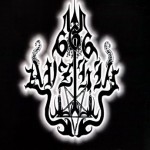 From out of Mexico City’s chaotic and concrete urban sprawl arose this monumental Black Metal album as a statement of militaristic and natural order, inextricably linked as they would have been to the inhabitants of Tenochtitlan, the former capital of the great Aztec civilisation. Avzhia here develop the ritualistic and prolonged, ‘Pentagram’ by Gorgoroth-like phrasing of ‘Dark Emperors’ into even grander arrangements panning across vast battlefields and landscapes, bringing keyboards to the foreground for a sense of epic melody that resembles Graveland’s ‘Creed of Iron’ being guided by the expansive compositions of Emperor. There is none of the lead guitarwork that’s central to ‘In The Nightside Eclipse’ in forming esoteric musical themes, so the symphonic majesty of ‘The Key of Throne’ is simply and effectively accompanied by the fullness of sweeping powerchords and this approach brings a lot of primitive but intelligent flavours to the sound and the composition as far as bringing the themes to a successful conclusion is concerned. When stripping away the keyboards from the guitars to reveal the simple beauty of an idea, almost Punk-like riffs of the sort Impaled Nazarene are infamous for are unleashed in a warlike clash of thought and action. With the inclusion of the keyboard, there’s a sense that Avzhia might have heard Skepticism’s ‘Stormcrowfleet’ as the same feeling of ethereal beauty and earthy power is evoked. The bass plays an important role as well, during the drawn-out riffing, reminiscent of Primordial’s ‘A Journey’s End’, folkier parts can be heard echoing underneath like a dormant race building its power to strike, and strike it does as the full instrumental ensemble combines to reiterate this idea. Perhaps this is Avzhia’s vision, like the Norwegian Black Metallers once possessed, of Satan’s adversarial power conquering the modern, Christian lands, once again appeasing with the blood of fallen enemies the ancient gods who had long ago died for their race.
From out of Mexico City’s chaotic and concrete urban sprawl arose this monumental Black Metal album as a statement of militaristic and natural order, inextricably linked as they would have been to the inhabitants of Tenochtitlan, the former capital of the great Aztec civilisation. Avzhia here develop the ritualistic and prolonged, ‘Pentagram’ by Gorgoroth-like phrasing of ‘Dark Emperors’ into even grander arrangements panning across vast battlefields and landscapes, bringing keyboards to the foreground for a sense of epic melody that resembles Graveland’s ‘Creed of Iron’ being guided by the expansive compositions of Emperor. There is none of the lead guitarwork that’s central to ‘In The Nightside Eclipse’ in forming esoteric musical themes, so the symphonic majesty of ‘The Key of Throne’ is simply and effectively accompanied by the fullness of sweeping powerchords and this approach brings a lot of primitive but intelligent flavours to the sound and the composition as far as bringing the themes to a successful conclusion is concerned. When stripping away the keyboards from the guitars to reveal the simple beauty of an idea, almost Punk-like riffs of the sort Impaled Nazarene are infamous for are unleashed in a warlike clash of thought and action. With the inclusion of the keyboard, there’s a sense that Avzhia might have heard Skepticism’s ‘Stormcrowfleet’ as the same feeling of ethereal beauty and earthy power is evoked. The bass plays an important role as well, during the drawn-out riffing, reminiscent of Primordial’s ‘A Journey’s End’, folkier parts can be heard echoing underneath like a dormant race building its power to strike, and strike it does as the full instrumental ensemble combines to reiterate this idea. Perhaps this is Avzhia’s vision, like the Norwegian Black Metallers once possessed, of Satan’s adversarial power conquering the modern, Christian lands, once again appeasing with the blood of fallen enemies the ancient gods who had long ago died for their race.
Demogorgon: To analize this album, well, it contains too few tracks but each one of them satisfies us and yes, there’s both ideological and musical evolution – but as always, firmly obscure roots that define Avzhia.
As the populist variants of Nordic Black Metal and Gothenburg Death Metal grew in volume and number, so did the attempts at “romantic” or “psychedelic” sound in Mexico, mostly misguided through a lack of coherence and real inspiration beyond the mundane wish to belong in a clandestine good-looking cult of gothic clothes; an unfortunate occurrence of middle class commercial mentality in a society otherwise unnaturally divided and polarized (the shades of civil war never left, nor the even deeper bloody roots of muerte culture). Prominent American label Full Moon Productions signed Argentum for their one interesting album, “Ad Interitum Funebrarum”, while many in the vein of cloak-and-hood-gothic Demolish and the rather interesting Black Vomit toiled in obscurity. The Chasm, a masterful brainchild of Cenotaph alumnus Daniel Corchado, advanced from Mexican beginnings to dominate the forthcoming decade (now in Chicago) with a progressive (structural, non-gimmick) Death Metal tour de force. Another relocator was the grinding, blasphemous and simplistic “bonehead black metal” group Morbosidad, whose several drummers died in accidents.
Demolish – Remembering the Cabalisticae Laments
 To be honest, and there is a reason to be because we are not here to create empty hype and false promise, most of Mexican metal of the 1990′s was comprised of worthless copies aping whatever neo-gothic metal trend was looming in the world at large and it’s nowhere more clear than in this compilation of the successive 1995 and 1997 demos of Demolish and the progression from mediocre to bad influence. The bouncy, hyper-emotional and lethargic black groove of the first part “Reinforcement Laments from the Lamb” (That’s just about what I emitted halfway through this concoction!?) is an incriminating example of heavy metal dressed as black metal, enveloped in saccharine keyboards which occasionally would inspire a vomitous reflex from even that top hatted abortion of Dimmu Borgir (old). Suffice to say there’s a lot of Anne Rice-y occult romance and affective screaming and bombast with hardly any musical surprise or moment of interest, as they would probably distract from the singular intent of securing the attention of fat gothic Wiccan bitches. I guess you might be into this if Covenant’s mercifully forgotten “In Times Before the Light” or earlier Cradle of Filth was the best thing that ever happened to you in black metal. The older more creeping old school death metal influenced occult metal in the earlier recorded second part “Artis Cabalisticae” includes violent moments of hope, but not enough to convince any further than, say, that first EP from Portuguese womanizers Moonspell. Hardly any Toltec spirit here, so move along.
To be honest, and there is a reason to be because we are not here to create empty hype and false promise, most of Mexican metal of the 1990′s was comprised of worthless copies aping whatever neo-gothic metal trend was looming in the world at large and it’s nowhere more clear than in this compilation of the successive 1995 and 1997 demos of Demolish and the progression from mediocre to bad influence. The bouncy, hyper-emotional and lethargic black groove of the first part “Reinforcement Laments from the Lamb” (That’s just about what I emitted halfway through this concoction!?) is an incriminating example of heavy metal dressed as black metal, enveloped in saccharine keyboards which occasionally would inspire a vomitous reflex from even that top hatted abortion of Dimmu Borgir (old). Suffice to say there’s a lot of Anne Rice-y occult romance and affective screaming and bombast with hardly any musical surprise or moment of interest, as they would probably distract from the singular intent of securing the attention of fat gothic Wiccan bitches. I guess you might be into this if Covenant’s mercifully forgotten “In Times Before the Light” or earlier Cradle of Filth was the best thing that ever happened to you in black metal. The older more creeping old school death metal influenced occult metal in the earlier recorded second part “Artis Cabalisticae” includes violent moments of hope, but not enough to convince any further than, say, that first EP from Portuguese womanizers Moonspell. Hardly any Toltec spirit here, so move along.
Argentum – Ad Interitum Funebrarum
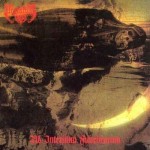 Hooded Wallachians prowl the crenellated wall tops of ancient castles, Mediterranean bards wield their lutes as metallic Paco de Lucias and some thin, wimpy goth called Philix Pherboreon (is this a Harry Potter character?) attacks the cheap Roland determined to reign as nocturnal dominion over every Mexican black metal wannabe circa 1996. With surprising class and flair, Argentum’s hymns to darkness remind one that the atmospheres descended part from “The Principle of Evil Made Flesh” and part from “Goetia”, might not stand the highest in today’s black metal elitists’ repertoire but today, sounds more exciting and unique because of their severe emotional and dimensional indulgement in a nearly forgotten quest – to compose music, not meaningless random noise or robotic riff patterns. The band is undoubtedly at their peak with the sustained moods of “Enter an Encysted Hibernation” and other slower pieces such as “The Serpent’s Lament” which traces the ethereal scents of the black lotus much as My Dying Bride would have if they had obsessed with black metal during the time of their first album. When the bands decides to thrash onwards in speed, and yet retain the “gloomy” keyboards in “Mortuus Infradaemoni”, it’s undoubtedly a bad choice, sounding ridiculous and swamping their intentions of occult credibility observed with “Lections on texts including English, latin, Catalan, Creol, and Ancientdark Language & Spanish”. The question mark imprinted by this upon one’s brain is better than mere satisfaction, though.
Hooded Wallachians prowl the crenellated wall tops of ancient castles, Mediterranean bards wield their lutes as metallic Paco de Lucias and some thin, wimpy goth called Philix Pherboreon (is this a Harry Potter character?) attacks the cheap Roland determined to reign as nocturnal dominion over every Mexican black metal wannabe circa 1996. With surprising class and flair, Argentum’s hymns to darkness remind one that the atmospheres descended part from “The Principle of Evil Made Flesh” and part from “Goetia”, might not stand the highest in today’s black metal elitists’ repertoire but today, sounds more exciting and unique because of their severe emotional and dimensional indulgement in a nearly forgotten quest – to compose music, not meaningless random noise or robotic riff patterns. The band is undoubtedly at their peak with the sustained moods of “Enter an Encysted Hibernation” and other slower pieces such as “The Serpent’s Lament” which traces the ethereal scents of the black lotus much as My Dying Bride would have if they had obsessed with black metal during the time of their first album. When the bands decides to thrash onwards in speed, and yet retain the “gloomy” keyboards in “Mortuus Infradaemoni”, it’s undoubtedly a bad choice, sounding ridiculous and swamping their intentions of occult credibility observed with “Lections on texts including English, latin, Catalan, Creol, and Ancientdark Language & Spanish”. The question mark imprinted by this upon one’s brain is better than mere satisfaction, though.
The Chasm – Conjuration of the Spectral Empire
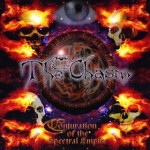 The Chasm’s fifth album in a productive and populated discography continues their journey through the astralic realms of the dead, traversing a heterogenous soundscape much like the cultural topography of Mexico itself. Where Corchado’s work with Cenotaph was inspired by the rhythmic power of Swedish Death Metal, this album is more in tune with not only the melodicism of old troops from Gotenborg like At The Gates, Unleashed and Dark Tranquility but the morbid disharmony of Norsk Black Metal classics ‘De Mysteriis Dom Sathanas’ and ‘Under A Funeral Moon’, which owe much to the Latin American primitivism of Sepultura that also goes into the sound of ‘Conjuration of the Spectral Empire’. The expansive melting pot of sounds and styles is guided by Shamanic visions that peer into the inpenetrable abode of Mictlantehcuhtli, coloured and contrasted by the opposing principles that intersect this psychic plane, giving this album a vast sense of direction proportional to the longing for ancient wisdom in a world torn from the continuum of tradition. From the very outset of ‘Conjuration…’, the winds of the Chihuahuan desert are conjured by guitars and effects, bringing to mind the main theme composed by Ennio Morricone for the nihilistic Western classic, ‘The Good, The Bad and The Ugly’. Each song develops from or towards a single, clear and always beautifully poignant melodic idea, fusing the structural framework of early Dismember with the technique of Technical Death Metal bands like Cynic and Atrocity and their insistence on rhythmic and melodic interaction, although the use of inverted powerchords amidst the South American chaos and Melodeath flourishes, to create a more sombre atmosphere recalls the obscure Black Metal of Mütiilation’s second album. The Chasm avoid the pitfalls of Melodic Death Metal by having this focus, removing themselves from the tendency of bands to resemble a Scandinavian folk riff-salad with no conceptual reasoning behind it. Instead, songs qualify as movements and the phrasal development therein demonstrates an awareness of Classical music that restores the grand aspirations of the Swedes and therefore stands alongside the likes of ‘The Red In The Sky Is Ours’ and ‘Like An Everflowing Stream’ as monuments to the primal, cosmic darkness of our true, inner nature.
The Chasm’s fifth album in a productive and populated discography continues their journey through the astralic realms of the dead, traversing a heterogenous soundscape much like the cultural topography of Mexico itself. Where Corchado’s work with Cenotaph was inspired by the rhythmic power of Swedish Death Metal, this album is more in tune with not only the melodicism of old troops from Gotenborg like At The Gates, Unleashed and Dark Tranquility but the morbid disharmony of Norsk Black Metal classics ‘De Mysteriis Dom Sathanas’ and ‘Under A Funeral Moon’, which owe much to the Latin American primitivism of Sepultura that also goes into the sound of ‘Conjuration of the Spectral Empire’. The expansive melting pot of sounds and styles is guided by Shamanic visions that peer into the inpenetrable abode of Mictlantehcuhtli, coloured and contrasted by the opposing principles that intersect this psychic plane, giving this album a vast sense of direction proportional to the longing for ancient wisdom in a world torn from the continuum of tradition. From the very outset of ‘Conjuration…’, the winds of the Chihuahuan desert are conjured by guitars and effects, bringing to mind the main theme composed by Ennio Morricone for the nihilistic Western classic, ‘The Good, The Bad and The Ugly’. Each song develops from or towards a single, clear and always beautifully poignant melodic idea, fusing the structural framework of early Dismember with the technique of Technical Death Metal bands like Cynic and Atrocity and their insistence on rhythmic and melodic interaction, although the use of inverted powerchords amidst the South American chaos and Melodeath flourishes, to create a more sombre atmosphere recalls the obscure Black Metal of Mütiilation’s second album. The Chasm avoid the pitfalls of Melodic Death Metal by having this focus, removing themselves from the tendency of bands to resemble a Scandinavian folk riff-salad with no conceptual reasoning behind it. Instead, songs qualify as movements and the phrasal development therein demonstrates an awareness of Classical music that restores the grand aspirations of the Swedes and therefore stands alongside the likes of ‘The Red In The Sky Is Ours’ and ‘Like An Everflowing Stream’ as monuments to the primal, cosmic darkness of our true, inner nature.
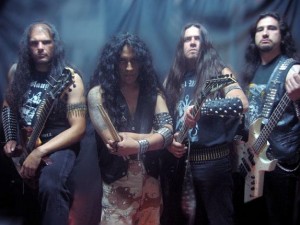 Through the international contact and amalgamation of principles brought about by simultaneously World Wide Web access and the extent of educating the young generation in English language (movies, videogames and music being elemental and important here) the new millennium saw Mexico closer than ever to its northern neighbour. Youth factions such as the hated “emo” culture would have been out of place in 1980′s conservative Mexico, but despite clashes between groups they are widely approved today. All in all, it seemed to weaken the unique characteristic of the Mexican underground which was the tough rebelliousness in speed metal and occult/mystical lyrical tendency in Death Metal. In other words, too many corpse painted posers (such as the unending repertoire of Azermedoth Records) and uneventful, funny “goregrinders” (Disgorge, the original of this style, still continues to exist) infected the underground.
Through the international contact and amalgamation of principles brought about by simultaneously World Wide Web access and the extent of educating the young generation in English language (movies, videogames and music being elemental and important here) the new millennium saw Mexico closer than ever to its northern neighbour. Youth factions such as the hated “emo” culture would have been out of place in 1980′s conservative Mexico, but despite clashes between groups they are widely approved today. All in all, it seemed to weaken the unique characteristic of the Mexican underground which was the tough rebelliousness in speed metal and occult/mystical lyrical tendency in Death Metal. In other words, too many corpse painted posers (such as the unending repertoire of Azermedoth Records) and uneventful, funny “goregrinders” (Disgorge, the original of this style, still continues to exist) infected the underground.
Eduardo: Certainly this isn’t an easy way to get money, fame or groupies. If that’s what a band is looking for, it’s just a bunch of shitty losers. You should work because you love what you are doing, and doing this just to be a sell out and gain a living from the people who manage you is a completely Shitty attitude. Underground Death Metal is for true warriors who eat, shit and talk metal, and love it as a son! To know all the underground beasts that still dwell on the catacombs of the worldwide scene and support them as brothers… In Europe it’s awesome how the Metal way of life is still the way for the chosen to die with their boots on. Metal in Europe is bigger than other music styles without the need of being in a popularity contest. Metal is for metalheads and that’s it.
 On the other hand, in Mexico, Metal has been taken as a trend. Every single metal subgenre such as death, thrash, black or speed has been invaded by stupid bastards with childish ideas and only commercial purposes. This is not only certain individuals, as even labels have mutated into money makers – signing bands created to give a commercial and false name to metal. They think that they know everything and even take the image of the old gods as costumes. Please! All those denim jackets full of patches from Possessed and Slayer, just to name a few, worn by kids of 18 years and claiming to be “thrash ’til death”! Jajajajajajajaja! Or the new trend of “old school death metal”? Please, when those bands were out, nobody cared about them! But now everybody is looking for those bands, jajajaja! Only the true ones we’ll meet at the end of the road. The other ones will escape to the next trend, because they never really belonged to us!
On the other hand, in Mexico, Metal has been taken as a trend. Every single metal subgenre such as death, thrash, black or speed has been invaded by stupid bastards with childish ideas and only commercial purposes. This is not only certain individuals, as even labels have mutated into money makers – signing bands created to give a commercial and false name to metal. They think that they know everything and even take the image of the old gods as costumes. Please! All those denim jackets full of patches from Possessed and Slayer, just to name a few, worn by kids of 18 years and claiming to be “thrash ’til death”! Jajajajajajajaja! Or the new trend of “old school death metal”? Please, when those bands were out, nobody cared about them! But now everybody is looking for those bands, jajajaja! Only the true ones we’ll meet at the end of the road. The other ones will escape to the next trend, because they never really belonged to us!
The resurrection of the necrocults
This is not to say Mexico’s soil doesn’t still bleed black at the desolate fullmoon hours. Old bands all the way to Luzbel are still sporadically active and the promised Avzhia offering “In My Domains” is one of our most awaited forthcoming releases in several years. Infinitum Obscure featuring The Chasm’s Roberto Lizárraga is a throwback to the days when death metallers weren’t afraid to expose religious mysticism, supernatural fervour and psychological “dark” addiction in one package, while Hacavitz and Yaotl Mictlan bring back the Aztec themes but do not retain the climactic level of Xibalba’s “Unique Mayan Black Metal”. Satanists who preach the ontology of Self and the theurgies of netherworlds remain plentiful, Denial and Necroccultus (both featuring scene veterans such as Supplicium’s Isaíah Huerta, Shub Niggurath’s Eduardo and Cenotaph’s Oscar Clorio) being probably the best of the bunch, and also for example Ravager enjoys wide exposure and releases on prominent European metal labels (while Avzhia sadly toils without a record deal).
Demogorgon: Look out for “In My Domains” – this album is strong in itself, riff by riff. It’s raw while plentiful in melodic interludes, grim voices and depressive atmospheres. We do what satisfies us, then other metalheads can satisfy themselves with Avzhia’s music. It’s great to meet true people when we do shows. Avzhia is always going to exist in the dark side of true Black Metal and we will keep doing our work full of darkness of our Lord Sathanas. Grim, cold, melancholic and depressive are characteristics of what Avzhia is! Only the true emperors live, eternal life to Black Metal! See you soon wherever you are… on “In My Domains” tour.
Marco: We just like the sound of a good song, no matter what style it is. As long as it reflects honesty and passion, clearly away from the rules of the mainstream. We have made this music since the ’90s, and still I can have ideas for a song that sounds great, even when there’s hundreds of bands around. You just need to find the right notes and stay focused on the path. This music has been really distorted from the original roots. What makes it worth I don’t know, but maybe just to know the right path is still there and the fact that we’re contributing to it. I think it depends on the integrity and personal convictions everybody has. It’s all part of finding personal freedom or spiritual release.
Joel: We are satisfied with the music that we did. It represents the things we felt at that time, and it’s a real condition that still prevails. Songwriting for us has been a natural change in the evolution of the band, as new songs have the seal of Mortuary but are definitely not the same. We have an evolutionary progress, you’ll see.
Necroccultus – Encircling the Mysterious Necrorevelation
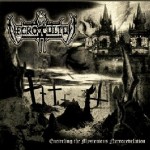 On the footsteps of Irapuato bands such as the Paradise Lost influenced Supplicium and the Chasm-ic A Perpetual Dying Mirror the mad inverters of music decided to go for an irate, warlike sound most akin to Vader’s most brutal incantations. For a fan of Sargatanas and earlier Shub-Niggurath, there are plenty of morbid mental cavities to succumb into in atmospheric death-thrashing of “Mirage of Death” or the more Northern sound of “Descent To Requiem”, actually close to Absu’s early efforts in mingling Swedish death metal and the more ritualistic and sensual sound of ambient black. As regrettably is the case with neo-death metal, there is a great temptation to succumb into a patterned safe manifestation of used riffs, which no longer have the capacity to shock or inspire but the most fresh and innocent listeners. One can only imagine what impact “The Necrosphere Within” would have had in 1987, but the lack of a honest exploration of death metal horizons arouses the question how long can “formulaic death metal” be “death metal” at all, since the genre was incepted to scare the listener into an acceptance of devious un-life. In a hodgepodge of riffs, the social instinct takes over and the music loses the “death-feeling”. A slight rescue is obtained by preserving much of the doom character of the members’ earlier bands, as well as wicked and proficient guitar solos. In total, “Encircling the Mysterious Necrorevelation” is far from bad, but it also lacks the essential magic and forceful intellect characteristic of Mexican metal peaks.
On the footsteps of Irapuato bands such as the Paradise Lost influenced Supplicium and the Chasm-ic A Perpetual Dying Mirror the mad inverters of music decided to go for an irate, warlike sound most akin to Vader’s most brutal incantations. For a fan of Sargatanas and earlier Shub-Niggurath, there are plenty of morbid mental cavities to succumb into in atmospheric death-thrashing of “Mirage of Death” or the more Northern sound of “Descent To Requiem”, actually close to Absu’s early efforts in mingling Swedish death metal and the more ritualistic and sensual sound of ambient black. As regrettably is the case with neo-death metal, there is a great temptation to succumb into a patterned safe manifestation of used riffs, which no longer have the capacity to shock or inspire but the most fresh and innocent listeners. One can only imagine what impact “The Necrosphere Within” would have had in 1987, but the lack of a honest exploration of death metal horizons arouses the question how long can “formulaic death metal” be “death metal” at all, since the genre was incepted to scare the listener into an acceptance of devious un-life. In a hodgepodge of riffs, the social instinct takes over and the music loses the “death-feeling”. A slight rescue is obtained by preserving much of the doom character of the members’ earlier bands, as well as wicked and proficient guitar solos. In total, “Encircling the Mysterious Necrorevelation” is far from bad, but it also lacks the essential magic and forceful intellect characteristic of Mexican metal peaks.
Yaotl Mictlan – Guerreros De La Tierra De Los Muertos
 Yaotl Mictlan in a similar respect to Xibalba borrow stylistically from European black metal. Their debut full-length contains a battle-hardened ferocity not unlike Graveland’s ‘Thousand Swords’, and in attitude resembles a less esoteric version of the classic Polish black metal acts. Musically this has the precision and sharp execution of Enslaved’s ‘Frost’ album, but with is overlaid with meandering, arpeggiated guitar forms that bring to mind a more rock-inclined take on Burzum’s first album. True to backdrop, the band bring elements unique to their Mexican heritage to the fore, in the form of wind instruments, percussives and acoustic guitar passages that are distinct within flamenco music. This is no doubt a unique approach, and firmly grasps a sound it can call it’s own, though lacking the cohesion and charge to put them in the same tier as Xibalba or Avzhia. As a result of this, ‘Guerreros De La Tierra De Los Muertos’ comes across as a tiresome listen, but not without the occasional flourish of excellence. Now signed with Candlelight records, it will be interesting to see what results their next release will artistically yield, as there are moments of promise here.
Yaotl Mictlan in a similar respect to Xibalba borrow stylistically from European black metal. Their debut full-length contains a battle-hardened ferocity not unlike Graveland’s ‘Thousand Swords’, and in attitude resembles a less esoteric version of the classic Polish black metal acts. Musically this has the precision and sharp execution of Enslaved’s ‘Frost’ album, but with is overlaid with meandering, arpeggiated guitar forms that bring to mind a more rock-inclined take on Burzum’s first album. True to backdrop, the band bring elements unique to their Mexican heritage to the fore, in the form of wind instruments, percussives and acoustic guitar passages that are distinct within flamenco music. This is no doubt a unique approach, and firmly grasps a sound it can call it’s own, though lacking the cohesion and charge to put them in the same tier as Xibalba or Avzhia. As a result of this, ‘Guerreros De La Tierra De Los Muertos’ comes across as a tiresome listen, but not without the occasional flourish of excellence. Now signed with Candlelight records, it will be interesting to see what results their next release will artistically yield, as there are moments of promise here.
Infinitum Obscure – Sub Atris Caelis
 Often referred to as a clone of The Chasm, Infinitum Obscure do indeed share more than a few identifiable traits with their fellow Mexicans, most notably the tremolo picking and those galloping triplets that lend so much power and vigour to the rhythm. There is something that ultimately separates the two bands, however; that being the conceptual direction each band embarks upon: while The Chasm invokes a strong, dark atmosphere that emphasizes the mystical, esoteric passage through some evanescent portal, Infinitum Obscure are far more direct in organizing a forceful rhythm in such a way as to remain concentrated on a single, grounded idea, often reinforcing this focus by frequently returning to familiar themes. So, while their main inspiration might take flight into stranger landscapes, Infinitum Obscure are quite content to portray the lost chasms of this world with an evocative atmosphere of imaginative melodies and, most importantly, direct and uncompromising riffing. On ‘Sub Atris Caelis’, Infinitum Obscure’s sophomore album, these points are emphasized more clearly, making it their definitive accomplishment to date. The need to shake off the burden of being a mere clone band is eminently present; the band tasks itself with creating something altogether their own, resulting in a real sense of the epic emerging from the patterns interwoven throughout the record; each song is striking at something profound, grasping wildly in the search for solidarity. The consequence of these compulsions is an album that sounds like it is still very much in The Chasm camp; while really it has taken several progressive leaps forward, leaving us with a work of art brimming with the self-confidence of autonomy.
Often referred to as a clone of The Chasm, Infinitum Obscure do indeed share more than a few identifiable traits with their fellow Mexicans, most notably the tremolo picking and those galloping triplets that lend so much power and vigour to the rhythm. There is something that ultimately separates the two bands, however; that being the conceptual direction each band embarks upon: while The Chasm invokes a strong, dark atmosphere that emphasizes the mystical, esoteric passage through some evanescent portal, Infinitum Obscure are far more direct in organizing a forceful rhythm in such a way as to remain concentrated on a single, grounded idea, often reinforcing this focus by frequently returning to familiar themes. So, while their main inspiration might take flight into stranger landscapes, Infinitum Obscure are quite content to portray the lost chasms of this world with an evocative atmosphere of imaginative melodies and, most importantly, direct and uncompromising riffing. On ‘Sub Atris Caelis’, Infinitum Obscure’s sophomore album, these points are emphasized more clearly, making it their definitive accomplishment to date. The need to shake off the burden of being a mere clone band is eminently present; the band tasks itself with creating something altogether their own, resulting in a real sense of the epic emerging from the patterns interwoven throughout the record; each song is striking at something profound, grasping wildly in the search for solidarity. The consequence of these compulsions is an album that sounds like it is still very much in The Chasm camp; while really it has taken several progressive leaps forward, leaving us with a work of art brimming with the self-confidence of autonomy.
Denial – Catacombs of the Grotesque
 Some of the most impressive new death metal from anywhere in the world, this churning, impactful and bodily animalistic accomplishment from former Cenotaph and Shub Niggurath madmen is not a joke. What Cannibal Corpse always intended with their chromatic, bass-heavy and relentlessly rhythmic one dimensional stream of riff becomes an amalgamation of melodic motifs and devastatingly experimental squeals in the hands of these perpetrators, as the background noise boils and envelops much as the classic “Onward to Golgotha” did, while the constant, FX enhanced, ridiculously monstrous voice of Ivan Velazquez intones all the perspiring tension of underworld nexus, the twilight threshold of life and death where sorcerers and demons whisper secrets to the warrior, offering true and false guidance, representing the violent archaic generations that waged war on Mexico’s bloody soil and continue to make many lives into living hell. I have alluded to the monotone nature, which is probably intentional and it hardly detracts from enjoying this cryptic abomination for further and further listenings, as the heights such as “The Pestilent Pits of Disgrace” or “Necrotic Invocations” are deceptively complex mazes of chords and melodies disguised as straightforward infernal metal by the tight manner of production and the guitarists’ sparse use of leads or interludes. Most importantly, the unrelenting hopelessness of these afterworld visions will force the listener to abandon the illusion of safety and immortality that makes the common man succumb to faulty, immoral decisions from day to day, thus achieving one of the highest principles of death metal: mental change (abomination). One would hesitate to lift such a recent work to the hallowed pantheon of Cenotaph and Mortuary after a brief listening span, but if a candidate is chosen from this tournée, this must be it.
Some of the most impressive new death metal from anywhere in the world, this churning, impactful and bodily animalistic accomplishment from former Cenotaph and Shub Niggurath madmen is not a joke. What Cannibal Corpse always intended with their chromatic, bass-heavy and relentlessly rhythmic one dimensional stream of riff becomes an amalgamation of melodic motifs and devastatingly experimental squeals in the hands of these perpetrators, as the background noise boils and envelops much as the classic “Onward to Golgotha” did, while the constant, FX enhanced, ridiculously monstrous voice of Ivan Velazquez intones all the perspiring tension of underworld nexus, the twilight threshold of life and death where sorcerers and demons whisper secrets to the warrior, offering true and false guidance, representing the violent archaic generations that waged war on Mexico’s bloody soil and continue to make many lives into living hell. I have alluded to the monotone nature, which is probably intentional and it hardly detracts from enjoying this cryptic abomination for further and further listenings, as the heights such as “The Pestilent Pits of Disgrace” or “Necrotic Invocations” are deceptively complex mazes of chords and melodies disguised as straightforward infernal metal by the tight manner of production and the guitarists’ sparse use of leads or interludes. Most importantly, the unrelenting hopelessness of these afterworld visions will force the listener to abandon the illusion of safety and immortality that makes the common man succumb to faulty, immoral decisions from day to day, thus achieving one of the highest principles of death metal: mental change (abomination). One would hesitate to lift such a recent work to the hallowed pantheon of Cenotaph and Mortuary after a brief listening span, but if a candidate is chosen from this tournée, this must be it.
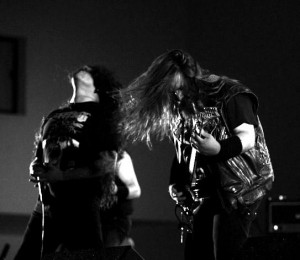 It can be said that while Mexico’s metal offerings are not especially plentiful, they are generally interesting and spirited while the best of the country are just about the best these genres have ever seen, on an international scale. Mexicans’ natural groundedness coupled with the mystical tendencies is an excellent standpoint for witnessing the oblique directions of Death and Black Metal from an unpretentious, furious, “Luciferian” angle. It’s almost a surprise there isn’t so much more of it, even though I’m surprised if any reader of this article gets a sense of scarcity regarding items of interest in Mexican metal. So, that being said, it’s about time we leave you to contemplate the mysteries of Toltecs and Satan in the consummation of the extreme, Romantic and evil compositional systems of these modern Mexican warriors and dreamers.
It can be said that while Mexico’s metal offerings are not especially plentiful, they are generally interesting and spirited while the best of the country are just about the best these genres have ever seen, on an international scale. Mexicans’ natural groundedness coupled with the mystical tendencies is an excellent standpoint for witnessing the oblique directions of Death and Black Metal from an unpretentious, furious, “Luciferian” angle. It’s almost a surprise there isn’t so much more of it, even though I’m surprised if any reader of this article gets a sense of scarcity regarding items of interest in Mexican metal. So, that being said, it’s about time we leave you to contemplate the mysteries of Toltecs and Satan in the consummation of the extreme, Romantic and evil compositional systems of these modern Mexican warriors and dreamers.
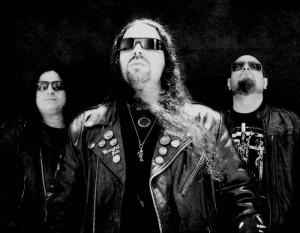 Marco: I think this music is very individual and very personal, and it can take you to a spiritual level, if you listen carefully. Our ancient cultures are based on spirituality, so that’s the point in our just making this weird mix. One song can take you to the top of the pyramids, and reach for the skies, and another one could take you to a scenario of a war against the conquerors. In the end it’s all about finding your own roots, it’s some kind of, another, resource to open your eyes and to step away from the enslavement of social rules and moral unconsciousness (Christian superstition included). In the end the people in power need a dormant society, so they can keep on corrupting, spreading corruption in every corner, and people are just playing the game. Only the connection to your roots will set you free.
Marco: I think this music is very individual and very personal, and it can take you to a spiritual level, if you listen carefully. Our ancient cultures are based on spirituality, so that’s the point in our just making this weird mix. One song can take you to the top of the pyramids, and reach for the skies, and another one could take you to a scenario of a war against the conquerors. In the end it’s all about finding your own roots, it’s some kind of, another, resource to open your eyes and to step away from the enslavement of social rules and moral unconsciousness (Christian superstition included). In the end the people in power need a dormant society, so they can keep on corrupting, spreading corruption in every corner, and people are just playing the game. Only the connection to your roots will set you free.
Joel: It’s a matter of self confidence in all the things we do, the feeling of greatness inside, the feeling of power, to reach new levels in the extreme brutal metal music we make! I’m not here to convince anyone to do anything, we are selected persons, we the whole scene… the others, the weak, must die!
Highest hails from Deathmetal.Org to Joel of Mortuary, Marco of Xibalba, Demogorgon of Avzhia, Eduardo of Necroccultus and last but not least Noe of Guttural Records for providing in-depth thoughts from the original perpetrators of real Mexican Metal! All of these bands are active so look out for forthcoming events of true massacre of the highest order.
No CommentsOnce you decided to come to Mexico you should have put all your petty fears away. Your decision to come should have vanquished them. You came because you wanted to come. That’s the warrior’s way.
– Don Juan Matus
Tags: zine-zines
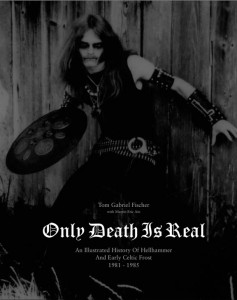 As death approaches, documentation increases. As a circle closes, individuals are given an oppurtunity to reflect on, track and document the meandering course that a society, individual or movement took and assess and re-evaluate this course to determine both its moments of strength and those of weakness. One consequence of this tracking and documentation is that the diligent and astute student of life is provided with an opportunity to discover those behavioural patterns that have been forged in the fires of history and are therefore conducive to success. The intelligent will reflect upon these lessons and apply them to their own worldview, life, ideology or movement and increase the quality, although not necessarily quantity of those lives. Therefore, we serious Hessians take the outpouring of heavy metal documentation rather serious, as it contains for the discerning, the lessons upon which the ideological, and perhaps spiritual foundation of a new spring, a new dawn and a new beginning for our culture may rest.
As death approaches, documentation increases. As a circle closes, individuals are given an oppurtunity to reflect on, track and document the meandering course that a society, individual or movement took and assess and re-evaluate this course to determine both its moments of strength and those of weakness. One consequence of this tracking and documentation is that the diligent and astute student of life is provided with an opportunity to discover those behavioural patterns that have been forged in the fires of history and are therefore conducive to success. The intelligent will reflect upon these lessons and apply them to their own worldview, life, ideology or movement and increase the quality, although not necessarily quantity of those lives. Therefore, we serious Hessians take the outpouring of heavy metal documentation rather serious, as it contains for the discerning, the lessons upon which the ideological, and perhaps spiritual foundation of a new spring, a new dawn and a new beginning for our culture may rest.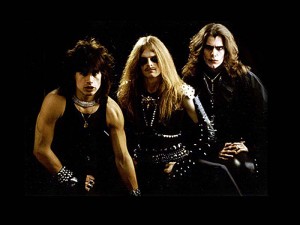
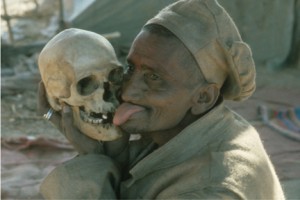 1.
1. 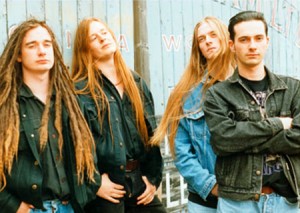 Vital musical forms rely on creativity, spontaneity and message over matter. It is the curse of the artist that often the best of their work is at the behest of youthful lunacy and drunken madness, the early recordings where they grasp at the straws of vision without quite having formulated the techniques for achieving them – so they improvise and as Nietzsche would say, “
Vital musical forms rely on creativity, spontaneity and message over matter. It is the curse of the artist that often the best of their work is at the behest of youthful lunacy and drunken madness, the early recordings where they grasp at the straws of vision without quite having formulated the techniques for achieving them – so they improvise and as Nietzsche would say, “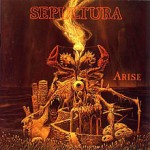 Coming off the back of the raging, deathly,
Coming off the back of the raging, deathly,  A controversial pick, Metallica’s excellent third album fulfills the incorporation of progressive themes but seems to crystallize them to such an extent that no more creative spark would emanate from their later works. Cliff Burton’s presence in the unit, and his bridging of neo-classicist influences into their progressive speed metal was a defining feature of what many hessians and metallers saw to be the main component of their excellence. Having let this seep in on ‘
A controversial pick, Metallica’s excellent third album fulfills the incorporation of progressive themes but seems to crystallize them to such an extent that no more creative spark would emanate from their later works. Cliff Burton’s presence in the unit, and his bridging of neo-classicist influences into their progressive speed metal was a defining feature of what many hessians and metallers saw to be the main component of their excellence. Having let this seep in on ‘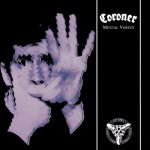 While the speed and thrash metal boom was crumbling all around in the wake of Seattle and LA-based clothing styles storming the nation, a few European stalwarts lingered on the fringes and while some of them didn’t dare to take up the arms for intricate, narrative death metal, they were influenced by its vicious aggression and psychedelic subject matter. Coroner from Zürich, around
While the speed and thrash metal boom was crumbling all around in the wake of Seattle and LA-based clothing styles storming the nation, a few European stalwarts lingered on the fringes and while some of them didn’t dare to take up the arms for intricate, narrative death metal, they were influenced by its vicious aggression and psychedelic subject matter. Coroner from Zürich, around 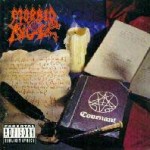 Among the most ancient, recognisable and influential cults in Death Metal’s history, Morbid Angel’s tale of decline is a prolonged one, and raised continuous questions about the band’s creative state, as though their instruments were being channelled purely at the whim of the Outer Gods. The Floridan giants finally resisted the unearthly impulses that once guided them to create powerful statements of occult awareness bound up with a Nietzschean sense of overcoming and will-to-power, such that with the releases of ‘Gateways of Annihilation’ and ‘Heretic’, the band fell victim to triviality. Incremental lapses in quality can be traced back to much earlier albums however, with the departure of guitarist
Among the most ancient, recognisable and influential cults in Death Metal’s history, Morbid Angel’s tale of decline is a prolonged one, and raised continuous questions about the band’s creative state, as though their instruments were being channelled purely at the whim of the Outer Gods. The Floridan giants finally resisted the unearthly impulses that once guided them to create powerful statements of occult awareness bound up with a Nietzschean sense of overcoming and will-to-power, such that with the releases of ‘Gateways of Annihilation’ and ‘Heretic’, the band fell victim to triviality. Incremental lapses in quality can be traced back to much earlier albums however, with the departure of guitarist 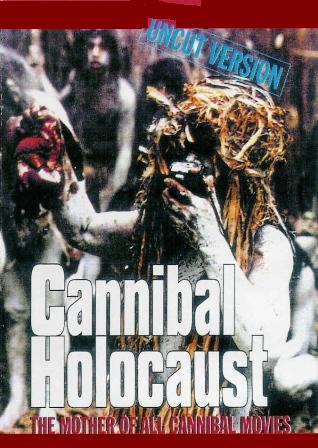 This is by no means the easiest of films to watch. It has numerous flaws and executions within the film that would provoke one to make immediate criticism, for example the sub-par, almost at times robotic acting and unimaginative script, and what could indeed be labelled a lack of cohesion (could this be due to editing and censoring? I am not sure), Cannibal Holocaust never ceases to shock and provoke, as well as provoke immediate questions of ‘who are the real savages?’ and how people might want to generally assess their modern, non-organic way of living.
This is by no means the easiest of films to watch. It has numerous flaws and executions within the film that would provoke one to make immediate criticism, for example the sub-par, almost at times robotic acting and unimaginative script, and what could indeed be labelled a lack of cohesion (could this be due to editing and censoring? I am not sure), Cannibal Holocaust never ceases to shock and provoke, as well as provoke immediate questions of ‘who are the real savages?’ and how people might want to generally assess their modern, non-organic way of living.
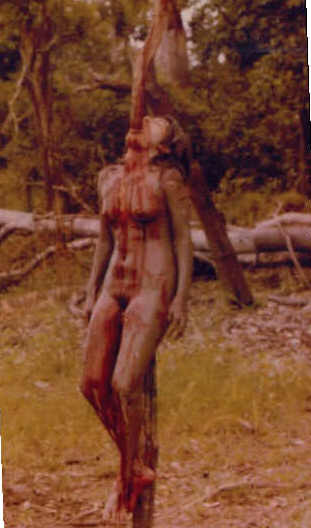 The most redeeming features of the film are the soundtrack by Riz Ortolani, which utilises rather dated synthesisers alongside a string orchestra, often interspersed with music that sounds not too dissimilar to Italian religous music, with arpeggiated acoustic guitars playing upbeat music that adds a brilliantly sarcastic touch to an otherwise grim and unrelenting series of violent acts. The usage of hand-held camera is very effective. As opposed to films where every scene is portrayed from a multi-angle perceptive, we see absolute realism for the most part, and is done in a non-perfective, improvised fashion that otherwise contributes heavily to making the film for the most part, very convincing. Cannibal Holocaust is flawed, yes. But it is a triumph of the cold, efficient will. Unlike the humoured (but still excellent) Dawn Of The Dead, Cannibal Holocaust is the work of the cynical sociopath, and seems to metaphorically imply that when one reaches or exceeds a certain threshold of excess, be it due to ignorance, lust, greed, self-indulgence etc, there is not even the vaguest chance of redemption. In a sense, the message of this film is an all-out war against the modern way, and the belief that furthering it to those who are otherwise unwilling to accept it is nothing short of a disastrous consequence. The film also suceeds in that it doesnt moralise about the issues it raises, and also leaves the film open to many possible interperatations. Overlooked by critics for its very bad acting, reviled by the politically correct, adored by much of the exploitation crowd, here is a film which holds truths and meanings beyond a framework that would isolate and sicken many.
The most redeeming features of the film are the soundtrack by Riz Ortolani, which utilises rather dated synthesisers alongside a string orchestra, often interspersed with music that sounds not too dissimilar to Italian religous music, with arpeggiated acoustic guitars playing upbeat music that adds a brilliantly sarcastic touch to an otherwise grim and unrelenting series of violent acts. The usage of hand-held camera is very effective. As opposed to films where every scene is portrayed from a multi-angle perceptive, we see absolute realism for the most part, and is done in a non-perfective, improvised fashion that otherwise contributes heavily to making the film for the most part, very convincing. Cannibal Holocaust is flawed, yes. But it is a triumph of the cold, efficient will. Unlike the humoured (but still excellent) Dawn Of The Dead, Cannibal Holocaust is the work of the cynical sociopath, and seems to metaphorically imply that when one reaches or exceeds a certain threshold of excess, be it due to ignorance, lust, greed, self-indulgence etc, there is not even the vaguest chance of redemption. In a sense, the message of this film is an all-out war against the modern way, and the belief that furthering it to those who are otherwise unwilling to accept it is nothing short of a disastrous consequence. The film also suceeds in that it doesnt moralise about the issues it raises, and also leaves the film open to many possible interperatations. Overlooked by critics for its very bad acting, reviled by the politically correct, adored by much of the exploitation crowd, here is a film which holds truths and meanings beyond a framework that would isolate and sicken many.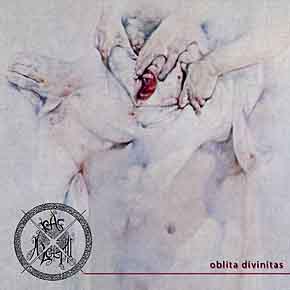
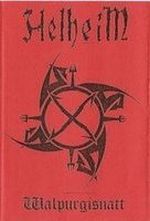 Ghoulish, ethereal and enwrapped in a magnetic tape production reeking of ancient tombs and broken 4-trackers, Helheim’s vision of industrial black metal is far more elemental than the connotations of that description during the last decade. As with the primitivist throbbing drum machines of Mysticum and the ambient blankets of Sort Vokter, the aim is ritual-hypnotic music which does not try to spice up black metal in order to make it more comforting or exciting; instead, it challenges one’s concentration by looping, returning and rewiring little fragments and pieces of riff in powerful early Norwegian black metal language, conducted by the raging screams of the now-deceased vocalist Jon A. Bjerk. The svastika simulacrum depicted on the cover highlights the natural difference with the smoother approach of the other Helheim of the same era, famed mostly for the vagrant mythological epics of “Jormundgand” – this Helheim rather spits in the face of the observed tradition in order to bring forth the subconscious terror of life and death that has been embedded in the mythos of all ancient cultures and bring across a pertinent message to the civilization (macrocosmically) and the black metal of our time (microcosmically). –Devamitra
Ghoulish, ethereal and enwrapped in a magnetic tape production reeking of ancient tombs and broken 4-trackers, Helheim’s vision of industrial black metal is far more elemental than the connotations of that description during the last decade. As with the primitivist throbbing drum machines of Mysticum and the ambient blankets of Sort Vokter, the aim is ritual-hypnotic music which does not try to spice up black metal in order to make it more comforting or exciting; instead, it challenges one’s concentration by looping, returning and rewiring little fragments and pieces of riff in powerful early Norwegian black metal language, conducted by the raging screams of the now-deceased vocalist Jon A. Bjerk. The svastika simulacrum depicted on the cover highlights the natural difference with the smoother approach of the other Helheim of the same era, famed mostly for the vagrant mythological epics of “Jormundgand” – this Helheim rather spits in the face of the observed tradition in order to bring forth the subconscious terror of life and death that has been embedded in the mythos of all ancient cultures and bring across a pertinent message to the civilization (macrocosmically) and the black metal of our time (microcosmically). –Devamitra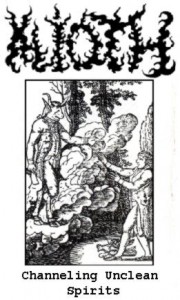 Remember how disappointed you were the last time you heard a new Varathron or Rotting Christ album? If the same lack of consistency and effort permeates other areas of Greek society, them having descended from the mythic glory of Athene into debts and poverty needs hardly the prophetic eye of Cassandra to fully explain. As in Neil Gaiman’s fantasy novel “American Gods” the lost European deities are found prowling the Wisconsin backwoods, Chicago based Alioth’s mystical and sensual tribute to Hellenic black metal ca. 1993 is admirably not only a continuation of the electric technoid dynamo drumbeat and an application of the palm muted speed and doom riffs in esoteric underground context; it’s also a highly logically strung sequence of moods as if the physical organization of pain and pleasure in a Dionysian ritual theatre, succumbing with the heavy held back moments of “The Channeling” and “Apocryphal Dimensions” and rising through the interludial “Invocation” and “Invocation II” to softly expire orgasmic relaxation. So much could be created out of this basic concept that it’s a pity the full-length album has remained cloaked in the depths of the primal sea, while Wargoat Obscurum iterates far less subtle (and far less interesting) metal with Cult of Daath. –Devamitra
Remember how disappointed you were the last time you heard a new Varathron or Rotting Christ album? If the same lack of consistency and effort permeates other areas of Greek society, them having descended from the mythic glory of Athene into debts and poverty needs hardly the prophetic eye of Cassandra to fully explain. As in Neil Gaiman’s fantasy novel “American Gods” the lost European deities are found prowling the Wisconsin backwoods, Chicago based Alioth’s mystical and sensual tribute to Hellenic black metal ca. 1993 is admirably not only a continuation of the electric technoid dynamo drumbeat and an application of the palm muted speed and doom riffs in esoteric underground context; it’s also a highly logically strung sequence of moods as if the physical organization of pain and pleasure in a Dionysian ritual theatre, succumbing with the heavy held back moments of “The Channeling” and “Apocryphal Dimensions” and rising through the interludial “Invocation” and “Invocation II” to softly expire orgasmic relaxation. So much could be created out of this basic concept that it’s a pity the full-length album has remained cloaked in the depths of the primal sea, while Wargoat Obscurum iterates far less subtle (and far less interesting) metal with Cult of Daath. –Devamitra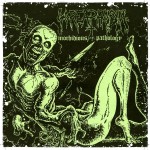 Goreaphobia’s debut album wouldn’t have been quite so eagerly anticipated without a strong back catalogue of minor releases such as the ‘Morbidious Pathology’ demo, which provides an unexpected listening experience if Mortal Repulsion is the only recording you’ve heard from the band. Where the full-length communicates visions from the abyss through the blank eyes of an old mystic locked in a lucid dreaming state, this demo is full of enough youthful energy to express the paranoia of a thousand souls trapped within the claustrophobic confines of their own mortality. Variations in riffs reflect these tightly packed structures, seeming to progress with not so much a linear logic than the re-arranging of parts of the whole, like limbs being removed from a body and sewn on to somewhere else entirely until the true grotesqueness of humanity is revealed. As with Mortal Repulsion, despite the physical connections to Incantation, there is a stronger similarity to the craftsmanship of Immolation and albums that would come in later years, such as the complex and disjointed but melodically evocative Here in After. The lead guitar work, though highly restrained, possesses a sense of neoclassical refinement that bridges some short-burst riffage with eloquent but totally disturbing solos. This demo shows the beginnings of an all too rare experiment in Death Metal where you can observe the maturation of a consistant idea as it goes through the turmoil of a tortured, temporal existence. –ObscuraHessian
Goreaphobia’s debut album wouldn’t have been quite so eagerly anticipated without a strong back catalogue of minor releases such as the ‘Morbidious Pathology’ demo, which provides an unexpected listening experience if Mortal Repulsion is the only recording you’ve heard from the band. Where the full-length communicates visions from the abyss through the blank eyes of an old mystic locked in a lucid dreaming state, this demo is full of enough youthful energy to express the paranoia of a thousand souls trapped within the claustrophobic confines of their own mortality. Variations in riffs reflect these tightly packed structures, seeming to progress with not so much a linear logic than the re-arranging of parts of the whole, like limbs being removed from a body and sewn on to somewhere else entirely until the true grotesqueness of humanity is revealed. As with Mortal Repulsion, despite the physical connections to Incantation, there is a stronger similarity to the craftsmanship of Immolation and albums that would come in later years, such as the complex and disjointed but melodically evocative Here in After. The lead guitar work, though highly restrained, possesses a sense of neoclassical refinement that bridges some short-burst riffage with eloquent but totally disturbing solos. This demo shows the beginnings of an all too rare experiment in Death Metal where you can observe the maturation of a consistant idea as it goes through the turmoil of a tortured, temporal existence. –ObscuraHessian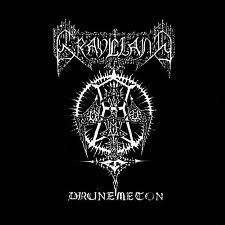 It’s not difficult to understand the distaste that Darken has for the recordings commited to tape during Graveland’s infancy in the light of his recent catalogue of pristine, epic and Atlantaean creations. Some distance away from the expansive scenes of battlefields and expressions of Romantic nationalism, this ancient offering from the living master of Pagan Black Metal is totally shrouded in a necrotic production, like ghostly shadows moving through oaken forests, casting a spell within more cloistered and Druidic surroundings than the output of Graveland from the past 15 years. Alongside the visions that created the force of Scandinavian Black Metal in the early 90′s, this demo represents the reclusive and misanthropic esotericism of that era, especially the primality of the lowest fidelity cults, Beherit and Ildjarn. Sounding like the work of a punk ostracised by that increasingly over-socialised group for being too idealistic and inhuman, Darken conjures a lurid interpretation of hypnotic Bathorean riffing that develops through the echoing of majestic, synthesised voices that open this recording as though a prologue to ‘The Celtic Winter’. The experimentation with primitivism in ‘Drunemeton’ is so deconstructionist that the guitar technique becomes fragmented completely and subordinated to reveal gloomy ambient moods that amplify the silence of a forest at night before the dawn of battle. There’s a similarity to the Beherit song ‘Nuclear Girl’ in how the guitar is used more like a sample, reverberating it’s texture through the keyboards to emphasise a cloistered sensation, accompanied by monastic chants at other times. Culminating in the ambient classic, ‘The Forest of Nemeton’, this demo is the successful beginnings of Graveland’s exploration into unconventional and nihilistic territory beneath the folky phrasing of guitar-led melodic work, which would shape the dynamic of his entire discography to follow. –ObscuraHessian
It’s not difficult to understand the distaste that Darken has for the recordings commited to tape during Graveland’s infancy in the light of his recent catalogue of pristine, epic and Atlantaean creations. Some distance away from the expansive scenes of battlefields and expressions of Romantic nationalism, this ancient offering from the living master of Pagan Black Metal is totally shrouded in a necrotic production, like ghostly shadows moving through oaken forests, casting a spell within more cloistered and Druidic surroundings than the output of Graveland from the past 15 years. Alongside the visions that created the force of Scandinavian Black Metal in the early 90′s, this demo represents the reclusive and misanthropic esotericism of that era, especially the primality of the lowest fidelity cults, Beherit and Ildjarn. Sounding like the work of a punk ostracised by that increasingly over-socialised group for being too idealistic and inhuman, Darken conjures a lurid interpretation of hypnotic Bathorean riffing that develops through the echoing of majestic, synthesised voices that open this recording as though a prologue to ‘The Celtic Winter’. The experimentation with primitivism in ‘Drunemeton’ is so deconstructionist that the guitar technique becomes fragmented completely and subordinated to reveal gloomy ambient moods that amplify the silence of a forest at night before the dawn of battle. There’s a similarity to the Beherit song ‘Nuclear Girl’ in how the guitar is used more like a sample, reverberating it’s texture through the keyboards to emphasise a cloistered sensation, accompanied by monastic chants at other times. Culminating in the ambient classic, ‘The Forest of Nemeton’, this demo is the successful beginnings of Graveland’s exploration into unconventional and nihilistic territory beneath the folky phrasing of guitar-led melodic work, which would shape the dynamic of his entire discography to follow. –ObscuraHessian Fifteen years ago, we were too proud and lofty to listen to it, our sensory devices soothed and inflamed by Panzerfaust, Battles in the North and Høstmørke, while the new generation of neo-progressive and mainstream black metal bands sought to enrapture even wider audiences with movie soundtrack influenced keyboards and angelic female voice conjured by fat-bottomed gothic tarts. For the atmospheric maniacs only, as it’s hard to argue for its musicality against the likes of Vikingligr Veldi; but the epic wanderlust and distorted pagan death ritual of this demo’s centerpiece, “Fimbulwinter”, unfolding like a flower at dawn or the psychedelic mandala of LSD invading brain receptors, is one of the pure innocent and mesmerizing gems of underground black metal in this sacred and forsaken era. The primal Isvind-esque melody dance like ripples of waves on a forest pond, the hissing tracker production complete with the macabre clack of a drum machine and the dampness of a Nordic bedroom cellar permeate the recording to such a thickness of adolescent black metal fury that it’s hardly palatable to generic audiences then and now. Barely a trace of the fast norsecore of the more familiar debut album Kill For Satan is noticeable here, the only similarity being the guitarist Draugluin’s technique of bricklike tremolo chord architecture where rhythm plays little importance. While primitive, this compositional method bears an intrinsic beauty which is worthy of recapitulation when the pure augustness of early Norwegian black metal has mostly become forgotten in favour of seemingly more rich and elaborate indie stylings. –Devamitra
Fifteen years ago, we were too proud and lofty to listen to it, our sensory devices soothed and inflamed by Panzerfaust, Battles in the North and Høstmørke, while the new generation of neo-progressive and mainstream black metal bands sought to enrapture even wider audiences with movie soundtrack influenced keyboards and angelic female voice conjured by fat-bottomed gothic tarts. For the atmospheric maniacs only, as it’s hard to argue for its musicality against the likes of Vikingligr Veldi; but the epic wanderlust and distorted pagan death ritual of this demo’s centerpiece, “Fimbulwinter”, unfolding like a flower at dawn or the psychedelic mandala of LSD invading brain receptors, is one of the pure innocent and mesmerizing gems of underground black metal in this sacred and forsaken era. The primal Isvind-esque melody dance like ripples of waves on a forest pond, the hissing tracker production complete with the macabre clack of a drum machine and the dampness of a Nordic bedroom cellar permeate the recording to such a thickness of adolescent black metal fury that it’s hardly palatable to generic audiences then and now. Barely a trace of the fast norsecore of the more familiar debut album Kill For Satan is noticeable here, the only similarity being the guitarist Draugluin’s technique of bricklike tremolo chord architecture where rhythm plays little importance. While primitive, this compositional method bears an intrinsic beauty which is worthy of recapitulation when the pure augustness of early Norwegian black metal has mostly become forgotten in favour of seemingly more rich and elaborate indie stylings. –Devamitra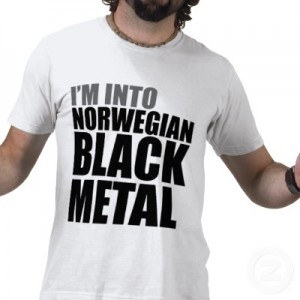 Experience dictates that the modern black metal listener is in essence a “hipster”; a self referential, individualist, egocentric and more or less self-pitying individual. Moreover, experience also dictates that the modern and profane black metal musician has more in common with the lowly pop artist than with the principles and individuals that helped to create the original Norwegian black metal movement.
Experience dictates that the modern black metal listener is in essence a “hipster”; a self referential, individualist, egocentric and more or less self-pitying individual. Moreover, experience also dictates that the modern and profane black metal musician has more in common with the lowly pop artist than with the principles and individuals that helped to create the original Norwegian black metal movement.
 Although such an outright recognition of the Supreme Principle is rarely encountered as explicitly in other black metal bands of the time, the anonymity and symbolism utilized by many of the protagonists within the scene, for example Enslaved and their conscious decision to explore the themes surrounding the Norse gods and the profound metaphysical symbolism implied therein, seems to point to an implicit recognition of higher principles, and perhaps the higher principle itself, from whence an expression of anonymity logically follows.
Although such an outright recognition of the Supreme Principle is rarely encountered as explicitly in other black metal bands of the time, the anonymity and symbolism utilized by many of the protagonists within the scene, for example Enslaved and their conscious decision to explore the themes surrounding the Norse gods and the profound metaphysical symbolism implied therein, seems to point to an implicit recognition of higher principles, and perhaps the higher principle itself, from whence an expression of anonymity logically follows.
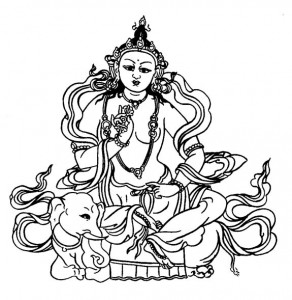 According to Hindu tradition the purpose of life is to become united with the ‘Self’, Brahman, the Supreme Principle, that which is enshrined in the hearts of all, according to ones station in life and capacity to do so. Again, this is the same Supreme Principle alluded to above, from which participation in, a true supra-individual anonymity necessarily springs. Although the original black metal purveyors may not have been consciously aware of the heights to which they were ascending, nor of the full traditional implications of what they were doing, it comes as no surprise that when re-discovering their traditional legends that they would inadvertently ascribe to the goal of, and rediscover some of the outstanding tenants of a more primordial, and complete Indo-European tradition, Hinduism, whose purpose again, much like that of the ancient Norse religion, was and still is to help facilitate the discovery of ‘Self’ knowledge, participation therein and the realization that all proceeds from the Supreme Principle.
According to Hindu tradition the purpose of life is to become united with the ‘Self’, Brahman, the Supreme Principle, that which is enshrined in the hearts of all, according to ones station in life and capacity to do so. Again, this is the same Supreme Principle alluded to above, from which participation in, a true supra-individual anonymity necessarily springs. Although the original black metal purveyors may not have been consciously aware of the heights to which they were ascending, nor of the full traditional implications of what they were doing, it comes as no surprise that when re-discovering their traditional legends that they would inadvertently ascribe to the goal of, and rediscover some of the outstanding tenants of a more primordial, and complete Indo-European tradition, Hinduism, whose purpose again, much like that of the ancient Norse religion, was and still is to help facilitate the discovery of ‘Self’ knowledge, participation therein and the realization that all proceeds from the Supreme Principle. Promised Land of Heavy Metal
Promised Land of Heavy Metal
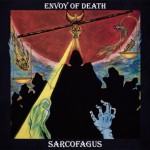
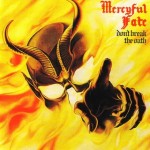
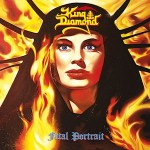
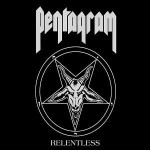
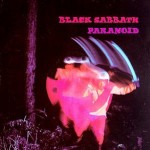
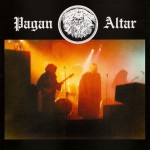
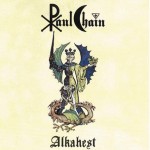
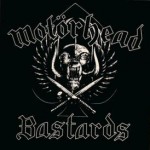

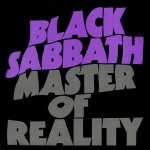
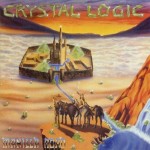

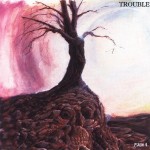
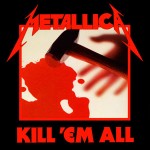
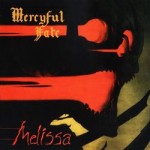



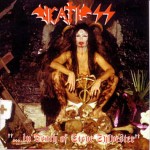
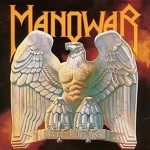


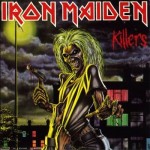
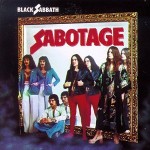
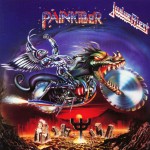
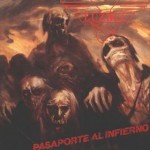
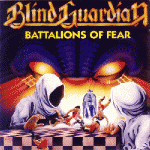
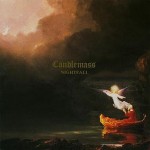
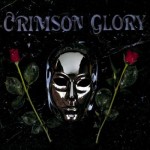
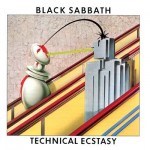
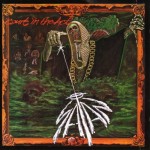


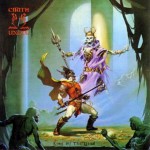
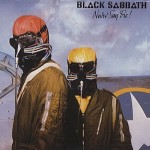
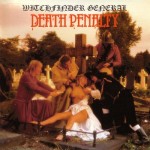
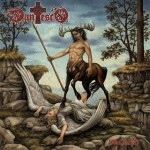
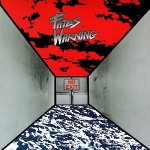

 Showing a strong advancement in technique and an evolution towards a darker style that would be the staple of records to come by the band, Slayer throw off the camp shackles of their excellent first album, and give a more progressive approach to songcraft yet give more emphasis on repetition within individual riffs. The violent droning guitar timbre of Discharge makes itself ever more present whilst the musical language of Judas Priest and Angel Witch works itself within those patterns. The dissonant twin soloing of King and Hanneman is more suitable to this new direction also, whilst Lombardo’s aggressive battery finds more cohesion in using less variation and being more of an ambient backdrop than before, with Araya’s unmistakable rasp encoding itself sadistically within the depths. A bleak affair that summed up the apocalyptic meanderings of the speed metal movement and the embryonic beginnings of the death metal that was yet to manifest. -Pearson
Showing a strong advancement in technique and an evolution towards a darker style that would be the staple of records to come by the band, Slayer throw off the camp shackles of their excellent first album, and give a more progressive approach to songcraft yet give more emphasis on repetition within individual riffs. The violent droning guitar timbre of Discharge makes itself ever more present whilst the musical language of Judas Priest and Angel Witch works itself within those patterns. The dissonant twin soloing of King and Hanneman is more suitable to this new direction also, whilst Lombardo’s aggressive battery finds more cohesion in using less variation and being more of an ambient backdrop than before, with Araya’s unmistakable rasp encoding itself sadistically within the depths. A bleak affair that summed up the apocalyptic meanderings of the speed metal movement and the embryonic beginnings of the death metal that was yet to manifest. -Pearson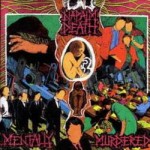 This work is like a convergence of Napalm Death and Carcass, having left From Enslavement to Obliteration and Reek or Putrefaction behind in order to expand on their styles, towards Harmony Corruption and Symphonies of Sickness respectively. By Napalm’s standards, at this point in their discography, these songs are quite lengthy and structured with an attention to detail that recaptures the subtle shifts in mechanical motion of the earliest side to Scum. This technique is re-invigorated by the cleaner production, relegating the extremity of fuzzy bass for the sake of a twin-guitar assault that creates an hypnotic and delusional sensation, and shows the input of Jesse Pintado who would go on to record another highly influential work of Grindcore – Terrorizer’s World Downfall. Composition is practically freed at very the earliest moments of songs onwards, unlike previous Napalm Death albums where these parts were used to establish exactly which single riff will become immersed in a barely discernable anarchic explosion for the rest of the 30 seconds of music. Instead, it’s given a more Death Metal treatment, e.g. in ‘The Missing Link’, the opening riff seems to degrade over time into smaller grinding patterns until the fragments are juggled like sacks of meat by morbid Death Metal riffs. This is where some of the tremelo melodies that would tear through the rotten wall of sound of Carcass finds its place, accompanied by the mocking lead guitars of Bill Steer. The human tornado, Mick Harris is even more precise than his previous effort, but doesn’t lose any of his epithet’s justification. Lee Dorrian’s vocals become more guttural and undecypherable, conceding to the futility of mainstream political discussion. The seeds of an approach closer in line with the burgeoning interest in Death Metal were sown here, simultaneously taking Grindcore one step further away from reaching the dead-end of short and simplistic outbursts of truncated riffs and hollow statements. -ObscuraHessian
This work is like a convergence of Napalm Death and Carcass, having left From Enslavement to Obliteration and Reek or Putrefaction behind in order to expand on their styles, towards Harmony Corruption and Symphonies of Sickness respectively. By Napalm’s standards, at this point in their discography, these songs are quite lengthy and structured with an attention to detail that recaptures the subtle shifts in mechanical motion of the earliest side to Scum. This technique is re-invigorated by the cleaner production, relegating the extremity of fuzzy bass for the sake of a twin-guitar assault that creates an hypnotic and delusional sensation, and shows the input of Jesse Pintado who would go on to record another highly influential work of Grindcore – Terrorizer’s World Downfall. Composition is practically freed at very the earliest moments of songs onwards, unlike previous Napalm Death albums where these parts were used to establish exactly which single riff will become immersed in a barely discernable anarchic explosion for the rest of the 30 seconds of music. Instead, it’s given a more Death Metal treatment, e.g. in ‘The Missing Link’, the opening riff seems to degrade over time into smaller grinding patterns until the fragments are juggled like sacks of meat by morbid Death Metal riffs. This is where some of the tremelo melodies that would tear through the rotten wall of sound of Carcass finds its place, accompanied by the mocking lead guitars of Bill Steer. The human tornado, Mick Harris is even more precise than his previous effort, but doesn’t lose any of his epithet’s justification. Lee Dorrian’s vocals become more guttural and undecypherable, conceding to the futility of mainstream political discussion. The seeds of an approach closer in line with the burgeoning interest in Death Metal were sown here, simultaneously taking Grindcore one step further away from reaching the dead-end of short and simplistic outbursts of truncated riffs and hollow statements. -ObscuraHessian Warm, playful and overflowing with the abundance of inspiration in the rediscovery of ancient shamanic techniques of mystical metal creation, the Greek pioneers of Rotting Christ forsook the aggravated modern noise of grindcore in time to ride the wave of blackness that usurped the European metal underground. Remnants and glimpses of 80’s fast modern metal (Slayer) give way to an astral, luminous intensity of synthesizers and slowly picked melodies that suspend the themes for a moment to enable the mind to stop wandering and relish the unholy moment of concentration, in a yogic gesture of blackness. Few have ever used the crushing sonic world of black and death metal to so fully immerse in ethereal ritual, and such rare examples as Drawing Down the Moon preserve plenty of subtle reminders to this widely heard classic of European black metal. As their chaotic exhortations in countless zines of the period conclude, Rotting Christ’s hybrid of gothic and black metal aimed for an architecture of the infinite, regal sunsets of lost kingdoms whose landscapes are not for the eyes of mortals, except in dreams and in death. As “Forest of N’Gai” aptly proves, black metal was at its height when not contorted to fit the schemes of a political ideology or an orthodox Satanist movement, but like the great works of literature a realm of fantasy of its own whose symbols are rooted in our deepest unconscious fears and desires. This sub-space can then be used by the analytical mind to figure the patterns of generation for a multitude of creative, even lunatic, concepts. -Devamitra
Warm, playful and overflowing with the abundance of inspiration in the rediscovery of ancient shamanic techniques of mystical metal creation, the Greek pioneers of Rotting Christ forsook the aggravated modern noise of grindcore in time to ride the wave of blackness that usurped the European metal underground. Remnants and glimpses of 80’s fast modern metal (Slayer) give way to an astral, luminous intensity of synthesizers and slowly picked melodies that suspend the themes for a moment to enable the mind to stop wandering and relish the unholy moment of concentration, in a yogic gesture of blackness. Few have ever used the crushing sonic world of black and death metal to so fully immerse in ethereal ritual, and such rare examples as Drawing Down the Moon preserve plenty of subtle reminders to this widely heard classic of European black metal. As their chaotic exhortations in countless zines of the period conclude, Rotting Christ’s hybrid of gothic and black metal aimed for an architecture of the infinite, regal sunsets of lost kingdoms whose landscapes are not for the eyes of mortals, except in dreams and in death. As “Forest of N’Gai” aptly proves, black metal was at its height when not contorted to fit the schemes of a political ideology or an orthodox Satanist movement, but like the great works of literature a realm of fantasy of its own whose symbols are rooted in our deepest unconscious fears and desires. This sub-space can then be used by the analytical mind to figure the patterns of generation for a multitude of creative, even lunatic, concepts. -Devamitra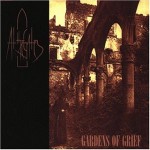 The original Gothenburg gloomy melody cult made one of their strongest statements on this early EP, pressed from demo to vinyl on the first year of the band’s existence. Fresh from life disrespecting bands such as Infestation and Grotesque, these Swedes nail the most desperate guitar harmonies since Candlemass, but infect them with the viral sensibility of a flux of death current. As if plugging the Sunlight Studios into your brains in direct interface, Svensson’s tremolos rip and rend mercilessly apart the soul of the beast that dared expose its true feelings of living in a world of hypocrisy and uncertainty. The band has preserved the most fragile moment of the Swedish death metal underground, the precarious balance between the catatonic psychosis of headbanging under alcoholic influence and the deep, burning, thoughtful soul of an encrypted Romantic in a world of pain and disguised memories. It all takes such tangible form in Tomas Lindberg’s cracking, maddened scream: “I am at the gates – Lord of Chaos – Let me sleep”. The fear and anger of At the Gates’ most revered albums will always remain something that divides audiences according to their response to such emotional cues, but “Gardens of Grief” is the un-terrorized, exuberant sound of youth that realizes the presence of death and dives into it headlong, appropriate to the Per Ohlin dedication in the liner notes. -Devamitra
The original Gothenburg gloomy melody cult made one of their strongest statements on this early EP, pressed from demo to vinyl on the first year of the band’s existence. Fresh from life disrespecting bands such as Infestation and Grotesque, these Swedes nail the most desperate guitar harmonies since Candlemass, but infect them with the viral sensibility of a flux of death current. As if plugging the Sunlight Studios into your brains in direct interface, Svensson’s tremolos rip and rend mercilessly apart the soul of the beast that dared expose its true feelings of living in a world of hypocrisy and uncertainty. The band has preserved the most fragile moment of the Swedish death metal underground, the precarious balance between the catatonic psychosis of headbanging under alcoholic influence and the deep, burning, thoughtful soul of an encrypted Romantic in a world of pain and disguised memories. It all takes such tangible form in Tomas Lindberg’s cracking, maddened scream: “I am at the gates – Lord of Chaos – Let me sleep”. The fear and anger of At the Gates’ most revered albums will always remain something that divides audiences according to their response to such emotional cues, but “Gardens of Grief” is the un-terrorized, exuberant sound of youth that realizes the presence of death and dives into it headlong, appropriate to the Per Ohlin dedication in the liner notes. -Devamitra An all too brief EP from Finnish gloomophiliacs Wings, as ephemeral as the tortured existence that is enshrouded in these twisted sounds of darkness-raped melody. Almost like the missing tracks from Cartilage’s cult classic ‘The Fragile Concept of Affection’, this continuation goes further to explore the sombre moods of songs like ‘Why Do I Watch The Dawn?’, in their Replicant-like reflections upon the transience of a human existence placed between the crushing, vice-grip of nothingness. Wings don’t peturb the balance of pace of slower, more expansive lakes of hypnotic melody that made up Cartilage’s contribution to their split with Altar, but there is greater focus on creating a doomier atmosphere, leaving no space for the grinding riffs of the past incarnation – a technique that parrelleled the Swedish Unleashed on their first album. Instead, an older treatment is given to the bouncier riffs, which could be heard as Punkier passages, but as this EP comes together as a whole to reveal, these bridge the narrative that seems to span across both songs with a mid-pace tempo in which the drawn out melodies pass through towards an expressive, quite neoclassical riff of totality – encompassing all the hopes that are weighed down by all the sorrows in the journey towards death. This poem in two parts is a valuable recording of Death Metal history, as a valid direction for these Finnish musicians to have taken following the demise of Cartilage, with all their weird melodic knowledge as baggage. -ObscuraHessian
An all too brief EP from Finnish gloomophiliacs Wings, as ephemeral as the tortured existence that is enshrouded in these twisted sounds of darkness-raped melody. Almost like the missing tracks from Cartilage’s cult classic ‘The Fragile Concept of Affection’, this continuation goes further to explore the sombre moods of songs like ‘Why Do I Watch The Dawn?’, in their Replicant-like reflections upon the transience of a human existence placed between the crushing, vice-grip of nothingness. Wings don’t peturb the balance of pace of slower, more expansive lakes of hypnotic melody that made up Cartilage’s contribution to their split with Altar, but there is greater focus on creating a doomier atmosphere, leaving no space for the grinding riffs of the past incarnation – a technique that parrelleled the Swedish Unleashed on their first album. Instead, an older treatment is given to the bouncier riffs, which could be heard as Punkier passages, but as this EP comes together as a whole to reveal, these bridge the narrative that seems to span across both songs with a mid-pace tempo in which the drawn out melodies pass through towards an expressive, quite neoclassical riff of totality – encompassing all the hopes that are weighed down by all the sorrows in the journey towards death. This poem in two parts is a valuable recording of Death Metal history, as a valid direction for these Finnish musicians to have taken following the demise of Cartilage, with all their weird melodic knowledge as baggage. -ObscuraHessian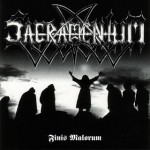 A true gem, Sacramentum’s first EP showcases a style that is melodic and emotive in a manner not unlike countrymen Dissection and Unanimated. Epic, catchy and well crafted compositions are multi-layered not unlike Emperor minus keyboards, the rush of guitar notes being vibrant and lively, with little emphasis towards a rhythmic expectation, as one would expect with most heavy metal and hard rock music. Simultaneously moody yet without being whiny, this early release by Sacramentum showcases a band who are able to master quality control and bring the best out of all the elements that define their music. Alongside At The Gates, artistically the finest Swedish metal act of the 1990′s. -Pearson
A true gem, Sacramentum’s first EP showcases a style that is melodic and emotive in a manner not unlike countrymen Dissection and Unanimated. Epic, catchy and well crafted compositions are multi-layered not unlike Emperor minus keyboards, the rush of guitar notes being vibrant and lively, with little emphasis towards a rhythmic expectation, as one would expect with most heavy metal and hard rock music. Simultaneously moody yet without being whiny, this early release by Sacramentum showcases a band who are able to master quality control and bring the best out of all the elements that define their music. Alongside At The Gates, artistically the finest Swedish metal act of the 1990′s. -Pearson Fast, raging black metal with the fury of early Deicide and the sharp harmonizing typical of Mayhem and Immortal’s ‘Pure Holocaust’ come head to head, in the guise of technically precise, abrupt songs. Shouty hardcore vocals, warm synth overlaps, a near constant blastbeat and anti-humanist lyrical concepts indicate a desire by known Norwegian musicians to advance the aggression of the black metal style and shift it’s idealogical focus away from romantic nostalgia. This brief E.P. lacks the spark of Norway’s foundational acts, but remains an influential statement of the subgenre. -Pearson
Fast, raging black metal with the fury of early Deicide and the sharp harmonizing typical of Mayhem and Immortal’s ‘Pure Holocaust’ come head to head, in the guise of technically precise, abrupt songs. Shouty hardcore vocals, warm synth overlaps, a near constant blastbeat and anti-humanist lyrical concepts indicate a desire by known Norwegian musicians to advance the aggression of the black metal style and shift it’s idealogical focus away from romantic nostalgia. This brief E.P. lacks the spark of Norway’s foundational acts, but remains an influential statement of the subgenre. -Pearson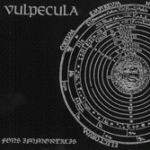 Who would have expected Chuck Keller to open the gates to very Orion itself after the folding of the aggressor squad par excellence Order from Chaos? As if a continuation of the promise of the astrological and alchemistic symbolism of the former bands’ lyrics, Vulpecula slows it down and strums soothing, yet vigorous melodies while the vocals multiple into wraith-like dimensions of rhythmic rasps and Keller’s leads occasionally burst into the aggressive, spasmous flight of an eagle amidst a thunderstorm. “Phoenix of the Creation” delves into exercises in authentic space synth, while “The First Point of Aries” harkens to the mid-paced woodland meditations that the Norwegians used to record at Grieghallen. Occasionally slightly hindered by the band’s eagerness to cram all the influences from Schulze to black metal into one short EP, the mere richness of it invites the ears to take their pleasure at will from the Babylonian garden of ponderous and prestigious movements that are achingly attractive and acceptable in their innocent refusal to complicate things with dissonance. Credit also goes for the lead guitar efforts of Keller on their traditional melodious injection which easily avoids the neutrality of more pop oriented bands trying to do the same. Almost like envisioning a “new age” approach to the genre, Vulpecula is an alien saucer amidst the orbit bound technologies of “progressive” death metal. -Devamitra
Who would have expected Chuck Keller to open the gates to very Orion itself after the folding of the aggressor squad par excellence Order from Chaos? As if a continuation of the promise of the astrological and alchemistic symbolism of the former bands’ lyrics, Vulpecula slows it down and strums soothing, yet vigorous melodies while the vocals multiple into wraith-like dimensions of rhythmic rasps and Keller’s leads occasionally burst into the aggressive, spasmous flight of an eagle amidst a thunderstorm. “Phoenix of the Creation” delves into exercises in authentic space synth, while “The First Point of Aries” harkens to the mid-paced woodland meditations that the Norwegians used to record at Grieghallen. Occasionally slightly hindered by the band’s eagerness to cram all the influences from Schulze to black metal into one short EP, the mere richness of it invites the ears to take their pleasure at will from the Babylonian garden of ponderous and prestigious movements that are achingly attractive and acceptable in their innocent refusal to complicate things with dissonance. Credit also goes for the lead guitar efforts of Keller on their traditional melodious injection which easily avoids the neutrality of more pop oriented bands trying to do the same. Almost like envisioning a “new age” approach to the genre, Vulpecula is an alien saucer amidst the orbit bound technologies of “progressive” death metal. -Devamitra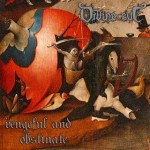 The first new release that’s being reviewed for 2010 and it’s already giving distinct impressions of the kind of quality that made 1993′s ‘As the Angels Weep’ a genuinely classic EP. Divine Eve keeps the form of this new material far simpler, stripping away the Death Metal-infected sludginess for a more rudimentary homage to early brutal music like Celtic Frost. ‘Vengeful and Obstinate’ makes its own unique statement by honing in on the nihilistic and warlike spirit of the Swiss legend’s To Mega Therion magnum opus, even invoking the same battle-horns on ‘Ravages of Heathen Men’ that bring focus to the beauty of conflict and strife in a meaningless universe. The varied tempo of grinding riffs set to a dirty bass guitar adds to the atmosphere of struggle as an outlet for this primitive, instinctual response to the world. ‘Whispers of Fire’ being the exception on this EP for the constantly up-tempo pace, it’s a pleasure to hear such slow and sludgy music churning visions of the darker universe beyond our lives of comfort and languish. The final and most devastating touch of ‘Vengeful and Obstinate’ is how Divine Eve makes extensive use of the piercing tone that Xan’s grating guitar setup produces, highlighting the spiral passage of powerchords by revealing their hidden, melodic architecture, ingenuiously managing to explain and enhance this rugged approach of legendary lineage. It’s about time the band produced a full-length and they’ve proved that they possess more than enough knowledge of unholy riffcraft to do so. -ObscuraHessian
The first new release that’s being reviewed for 2010 and it’s already giving distinct impressions of the kind of quality that made 1993′s ‘As the Angels Weep’ a genuinely classic EP. Divine Eve keeps the form of this new material far simpler, stripping away the Death Metal-infected sludginess for a more rudimentary homage to early brutal music like Celtic Frost. ‘Vengeful and Obstinate’ makes its own unique statement by honing in on the nihilistic and warlike spirit of the Swiss legend’s To Mega Therion magnum opus, even invoking the same battle-horns on ‘Ravages of Heathen Men’ that bring focus to the beauty of conflict and strife in a meaningless universe. The varied tempo of grinding riffs set to a dirty bass guitar adds to the atmosphere of struggle as an outlet for this primitive, instinctual response to the world. ‘Whispers of Fire’ being the exception on this EP for the constantly up-tempo pace, it’s a pleasure to hear such slow and sludgy music churning visions of the darker universe beyond our lives of comfort and languish. The final and most devastating touch of ‘Vengeful and Obstinate’ is how Divine Eve makes extensive use of the piercing tone that Xan’s grating guitar setup produces, highlighting the spiral passage of powerchords by revealing their hidden, melodic architecture, ingenuiously managing to explain and enhance this rugged approach of legendary lineage. It’s about time the band produced a full-length and they’ve proved that they possess more than enough knowledge of unholy riffcraft to do so. -ObscuraHessian The early nineties was replete with Death Metal bands that are now legendary, contributing to the cult’s creative height, but largely from the now infamous concentration zones of northern Europe and across the Americas. This left several adjacent scenes with relatively little notoreity and condemned some first-rate albums to obscurity. Our review of Disaffected’s ‘
The early nineties was replete with Death Metal bands that are now legendary, contributing to the cult’s creative height, but largely from the now infamous concentration zones of northern Europe and across the Americas. This left several adjacent scenes with relatively little notoreity and condemned some first-rate albums to obscurity. Our review of Disaffected’s ‘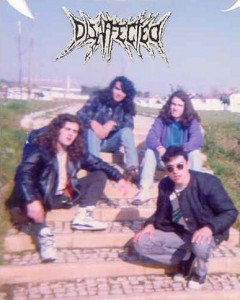 But in 2007, me and guitar player Sérgio Paulo, decided to reunite the band after 10 years of silence, and after a few meetings with the band members discussing a possible band reunion, the decision was “Let’s do it!!!”. A lot had passed with the band and the band members during these inactive years. Each had gone their own way in music and life. Due to the tragic accident of Sergio Paulo (guitarist) in 2004, all members got together again for the purpose of supporting a good friend. Sergio was lucky to survive a coma sleep of 2 weeks. His force of living had made him come back to us, and he had (literally) to restart his whole life, like being born again. He recovered most his abilities, and even his guitar mastery is back in 99%. A lot of things he had lost in his memory due to this accident, but he had never forgot DISAFFECTED music and his friends!
But in 2007, me and guitar player Sérgio Paulo, decided to reunite the band after 10 years of silence, and after a few meetings with the band members discussing a possible band reunion, the decision was “Let’s do it!!!”. A lot had passed with the band and the band members during these inactive years. Each had gone their own way in music and life. Due to the tragic accident of Sergio Paulo (guitarist) in 2004, all members got together again for the purpose of supporting a good friend. Sergio was lucky to survive a coma sleep of 2 weeks. His force of living had made him come back to us, and he had (literally) to restart his whole life, like being born again. He recovered most his abilities, and even his guitar mastery is back in 99%. A lot of things he had lost in his memory due to this accident, but he had never forgot DISAFFECTED music and his friends!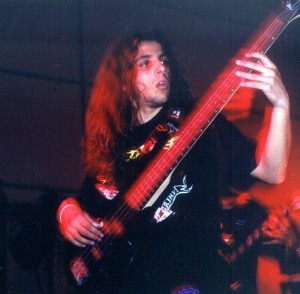 In 1994, I played bass guitar with a Jazz sextet featuring vocalist star Patrícia Fernandes, and we performed a show at Festa do Avante’94 (Seixal) in September of that same year. During the Summer ’97, I played bass guitar at Flood (Alternative Rock) as the support band of Santos & Pecadores Summer Tour ’97. In March ’02, in the aftermath of our Death Metal project Skinblade (1999-2002), me and drummer O decided to form a new band called Sybila, based on avant-garde style, and in December ’04, we entered Studio G22 (Feijó, Almada) with producer Paulo Vieira (Firstborn) to record the promotional song ‘Cycles’. The band split up in 2008 due to professional commitments of the musicians.
In 1994, I played bass guitar with a Jazz sextet featuring vocalist star Patrícia Fernandes, and we performed a show at Festa do Avante’94 (Seixal) in September of that same year. During the Summer ’97, I played bass guitar at Flood (Alternative Rock) as the support band of Santos & Pecadores Summer Tour ’97. In March ’02, in the aftermath of our Death Metal project Skinblade (1999-2002), me and drummer O decided to form a new band called Sybila, based on avant-garde style, and in December ’04, we entered Studio G22 (Feijó, Almada) with producer Paulo Vieira (Firstborn) to record the promotional song ‘Cycles’. The band split up in 2008 due to professional commitments of the musicians. 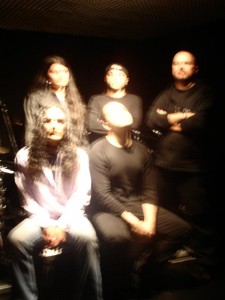 Gião: Musically, we intend to continue with the style that characterizes Disaffected, trying to explore new levels of music, sometimes melodic sometimes dissonant. In this new album the lyrical context consists in two parts. Part 1 with dark and obscure lyrics, showing the route of the band from the stop until the meeting, and then in Part 2 we will try to depict the rebirth of the band with lyrics more encouraging and positive. We’ll sign a new label contract too, but for now, we have nothing confirmed yet.
Gião: Musically, we intend to continue with the style that characterizes Disaffected, trying to explore new levels of music, sometimes melodic sometimes dissonant. In this new album the lyrical context consists in two parts. Part 1 with dark and obscure lyrics, showing the route of the band from the stop until the meeting, and then in Part 2 we will try to depict the rebirth of the band with lyrics more encouraging and positive. We’ll sign a new label contract too, but for now, we have nothing confirmed yet. With the advent of another grim Autumn, half of the world retreats into glowing boxes of warmth and comfort to preserve the sickly and feverish Summertime langour. In a time where the seasonal rituals of harvest survives only as a novelty for urbanites and other moderns, for the sinister few, this is the season to step out into the growing shade of night and harvest the souls of the damned for they will be reborn into a new, unholy dawn. Such apocalyptic ends have necessitated a gathering of gargantuan proportions and could not be more appropriately named as the third ‘Black Mass Festival‘ in Helsinki later this week. Nefarious and astralic cults known to Hessians the world over, like Necros Christos, Sadistic Intent, Cruciamentum, Neutron Hammer, Lie in Ruins, and Death Metal legends, Demigod will be devastating the city and delivering winter even earlier than the Arctic already experiences it. Among such legions and Deathmetal.Org personnel in devout attendance will be London-based Death Metal occultists, Grave Miasma, making a similar journey to myself, but before our paths would re-intersect on the shamanic land of ancient Suomi, I posed a few questions to their guitarist and vocalist, the acronymious Heruka C.C.O.T.N., who seeks to re-ignite the dying embers of Death fucking Metal’s true fucking spirit on the very soil of the wider genre‘s birth.
With the advent of another grim Autumn, half of the world retreats into glowing boxes of warmth and comfort to preserve the sickly and feverish Summertime langour. In a time where the seasonal rituals of harvest survives only as a novelty for urbanites and other moderns, for the sinister few, this is the season to step out into the growing shade of night and harvest the souls of the damned for they will be reborn into a new, unholy dawn. Such apocalyptic ends have necessitated a gathering of gargantuan proportions and could not be more appropriately named as the third ‘Black Mass Festival‘ in Helsinki later this week. Nefarious and astralic cults known to Hessians the world over, like Necros Christos, Sadistic Intent, Cruciamentum, Neutron Hammer, Lie in Ruins, and Death Metal legends, Demigod will be devastating the city and delivering winter even earlier than the Arctic already experiences it. Among such legions and Deathmetal.Org personnel in devout attendance will be London-based Death Metal occultists, Grave Miasma, making a similar journey to myself, but before our paths would re-intersect on the shamanic land of ancient Suomi, I posed a few questions to their guitarist and vocalist, the acronymious Heruka C.C.O.T.N., who seeks to re-ignite the dying embers of Death fucking Metal’s true fucking spirit on the very soil of the wider genre‘s birth. ObscuraHessian: Interest in more archaic forms of Death Metal is growing all around the world, as if returning to first principles and rediscovering our primordial selves. Consequently, as evidenced in your EP, the music is becoming esoteric like it used to be, wrapping dark and cosmic imagery in death-worshipping ‘theological’ statements. How important is esotericism in such a style and scene as Death Metal? Is it just a ‘thematic choice’ or something more?
ObscuraHessian: Interest in more archaic forms of Death Metal is growing all around the world, as if returning to first principles and rediscovering our primordial selves. Consequently, as evidenced in your EP, the music is becoming esoteric like it used to be, wrapping dark and cosmic imagery in death-worshipping ‘theological’ statements. How important is esotericism in such a style and scene as Death Metal? Is it just a ‘thematic choice’ or something more?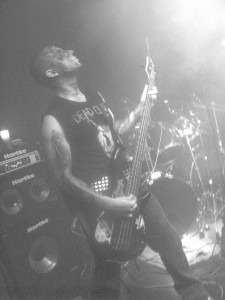 ObscuraHessian: There’s a lot of sounds from ‘Joined in Darkness‘-era Demoncy that surface in the music of ‘Exalted Emanation’, which adds a Black Metal flavour to it. Is this a favourite album of the band or are you more into Death Metal? Who would you say are your biggest musical influences?
ObscuraHessian: There’s a lot of sounds from ‘Joined in Darkness‘-era Demoncy that surface in the music of ‘Exalted Emanation’, which adds a Black Metal flavour to it. Is this a favourite album of the band or are you more into Death Metal? Who would you say are your biggest musical influences?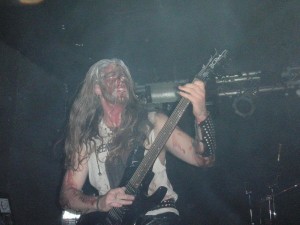 C.C.O.T.N.: To draw inspiration from my surroundings, I go out of London – often far indeed. Man is attuned with his surroundings, and living in this city is not congruent with the contemplation needed to collate this stimulation. I do find desolate urban areas during the dead of night to exude such sinister ambience, however. Whilst there are locations of Occult interest in the capital, other provinces of England are more relevant whether in regards to tangible brooding atmospheres or unseen power currents.
C.C.O.T.N.: To draw inspiration from my surroundings, I go out of London – often far indeed. Man is attuned with his surroundings, and living in this city is not congruent with the contemplation needed to collate this stimulation. I do find desolate urban areas during the dead of night to exude such sinister ambience, however. Whilst there are locations of Occult interest in the capital, other provinces of England are more relevant whether in regards to tangible brooding atmospheres or unseen power currents. As much of the northern hemisphere is being overwhelmed by the onslaught of winter, the flames of Hell are rising to consume the south at summer’s peak. Still, the hardened souls of Black Metal warriors remain unfrozen, and Australia‘s Dis Pater from
As much of the northern hemisphere is being overwhelmed by the onslaught of winter, the flames of Hell are rising to consume the south at summer’s peak. Still, the hardened souls of Black Metal warriors remain unfrozen, and Australia‘s Dis Pater from 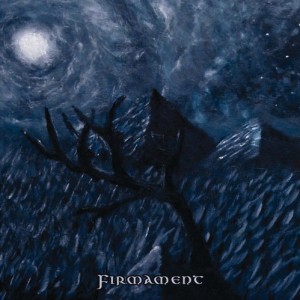 ObscuraHessian: The sound of the full-length is naturally better as there’s more space between instruments but you still managed to reflect an enclosed feeling which sounds like the music is passing through a million leaves and branches before it hits the listener. Did the demo receive any remastering before sent to be pressed for its forthcoming distribution?
ObscuraHessian: The sound of the full-length is naturally better as there’s more space between instruments but you still managed to reflect an enclosed feeling which sounds like the music is passing through a million leaves and branches before it hits the listener. Did the demo receive any remastering before sent to be pressed for its forthcoming distribution?
